

Release Your Potential

It starts with the right software
A modern propane business presents unlimited opportunities for growth. Let ADD Systems help you realize all those possibilities as we meet today’s challenges of customer experience, speed, accuracy, mobility, and ever more important, scalability.
ADD Systems has been providing solutions to the energy distribution industry –retail and wholesale fuel, propane, convenience stores and more – since 1973.

Heads of Departments
Editor-in-Chief Carley Fallows editor@littlegatepublishing.com
Space Management Emlyn Freeman emlynfreeman@littlegatepublishing.com
Media Coordinator Andrew Williams andrew@littlegatepublishing.com
Lead Designer Alina Sandu Research Kristina Palmer-Folt Editorial Research Amber Winterburn
Corporate Director Anthony Letchumaman anthonyl@littlegatepublishing.com
Founder and CEO Stephen Warman stevewarman@littlegatepublishing.com
For enquiries or subscriptions contact info@littlegatepublishing.com +44 1603 296 100
ENDEAVOUR MAGAZINE is published by Littlegate Publishing LTD which is a Registered Company in the United Kingdom.
Company Registration: 07657236
VAT registration number: 116 776007
343 City Road 60 Thorpe Road London 79 Norwich EC1 V1LR NR1 1RY
Littlegate Publishing Ltd does not accept responsibility for omissions or errors. The points of view expressed in articles by attributing writers and/or in advertisements included in this magazine do not necessarily represent those of the publisher. Any resemblance to real persons, living or dead is purely coincidental. Whilst every effort is made to ensure the accuracy of the information contained within this magazine, no legal responsibility will be accepted by the publishers for loss arising from use of information published. All rights reserved. No part of this publication may be reproduced or stored in a retrievable system or transmitted in any form or by any means without the prior written consent of the publisher.

Copyright© Littlegate Publishing Ltd
Editor’s Note
When you think of the Asia-Pacific region, you would probably imagine beautiful beaches and forests, alongside amazing wildlife and marine animals. Although this is most certainly true from a tourism point of view, in a business mindset, all these specialised resources make it the perfect place for technological and industrial growth.
Consequently, across Asia and the Pacific region, what can be witnessed is the rapid increase in new technology, globalisation, and market-orientated reform. This points towards vast innovation and enhancement of industry. Thus, here at Endeavour, we have been very lucky to witness how such companies have drastically grown, as business advancements have swept across the vast region. This is also helped by the growing demands of a rapidly increasing population. This means that the Asia-Pacific region can afford a greater workforce and economic advancement.
It is for this reason that the Asia-Pacific region deserves its own specific publication. Within this issue, you will find out about brand new innovations in engineering, sailing and biscuits! Thus, we will not only discover the business behind the lavish and decadent Asian skylines but how such companies face the challenges of the ever-modernising world.


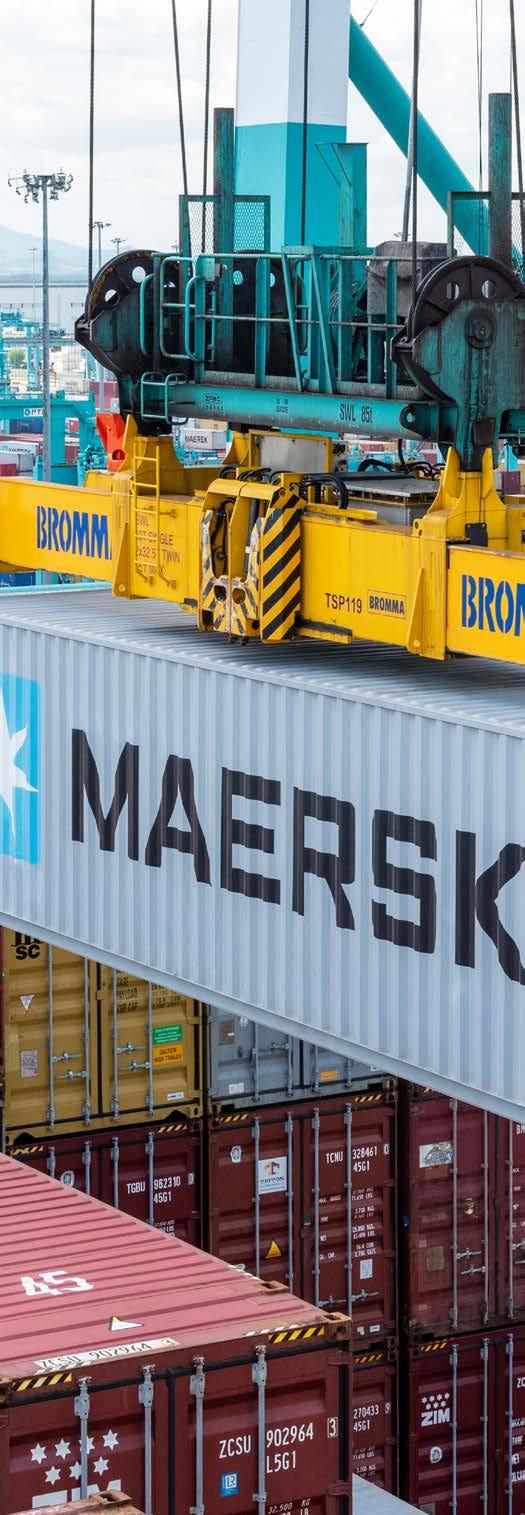

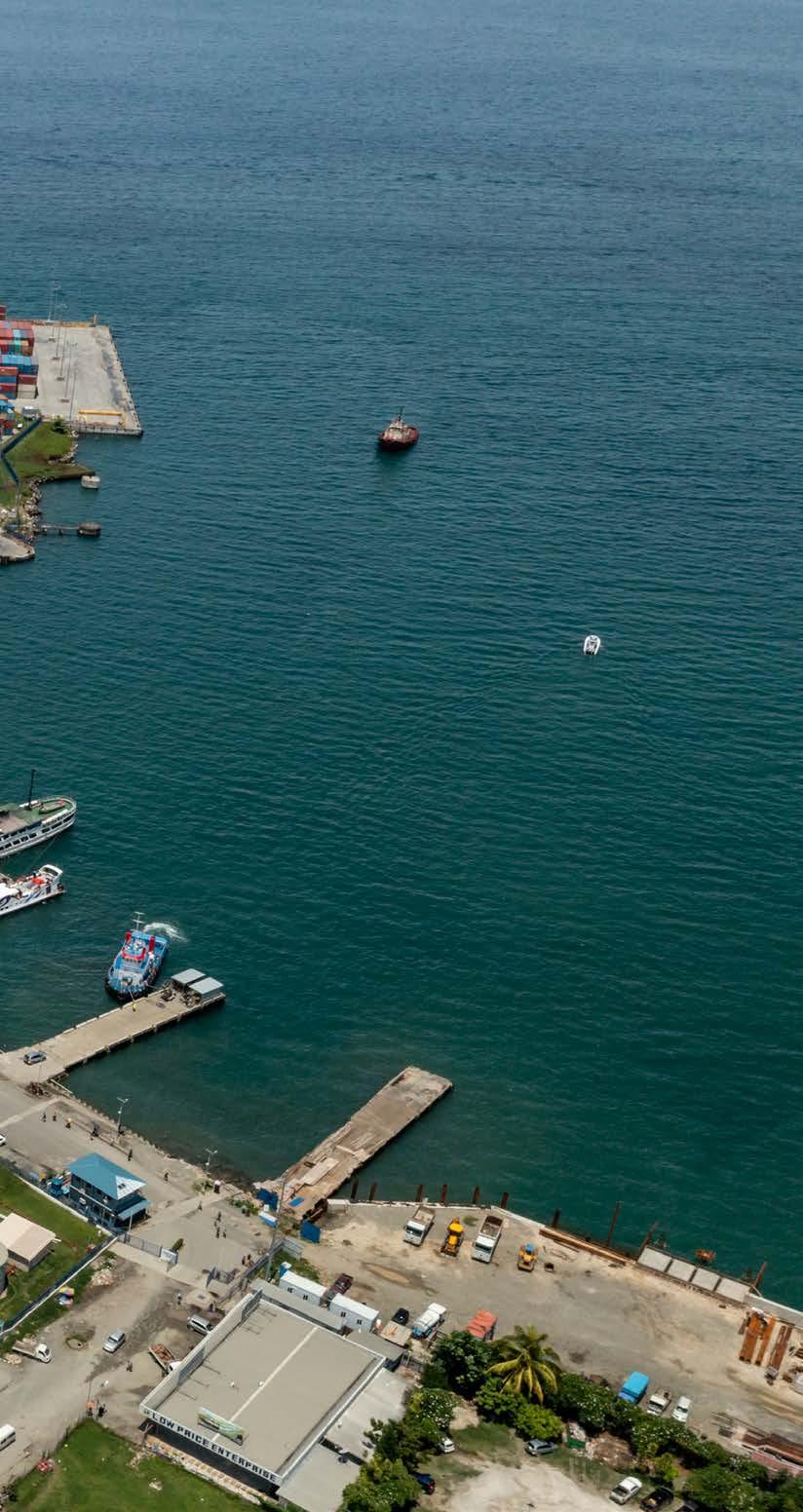
Solomon Islands Port Authority

Made up of a double chain of volcanic islands and coral atolls, the Solomon Islands is a country located in the southwest of the Pacific Ocean. Due to its vital location in the Pacific Ocean, the island’s main ports of Honiara and Noro are linked to key ports in Australia, as well as ports in New Zealand, Japan, China and Southeast Asia. Therefore, the shipping industry of the Solomon Islands is a vital aspect of the country’s economy, with the country’s main ports serving as a premier hub for port and maritime activities, providing the Solomon Islands as a gateway for international trade. To oversee such a vital aspect of the country’s economy, the Solomon Islands Port Authority (SIPA) was developed to oversee the development of the Island’s ports and deliver them as the South Pacific’s Strategic Gateway to the World.
Established in 1956, SIPA is a governmentowned authority responsible for overseeing the operation and development of the ports of Honiara and Noro for the Solomon Islands. The Authority is mandated to provide, maintain, and improve the port facilities of Honiara and Noro, whilst overseeing the maritime operations across the territorial waters of the Solomon Islands. Across these operations, SIPA is focused on harnessing the potential of the Solomon Islands’ shipping industry to deliver ports that can handle the cargo arriving and leaving its shores with seamless solutions.
In recent years, global cargo trade volumes have increased, and this has been seen across the port of the Solomon Islands. Therefore, a key part of SIPA’s role is to help support this growing demand and deliver vital commodity trade for the region, which will have knock-on benefits for the economy. However, SIPA achieves this, whilst also working to deliver this shipping capability in the most sustainable way possible. Therefore, in recent years, SIPA has been moving the ports across the country towards a more environmentally conscious future, helping them to lower their energy consumption and cost on the planet whilst still delivering the vital cargo services needed to support the Islands.
One of the central ports for the Solomon Islands is the Port of Honiara, which is the capital port for the Islands. The port is located on the northern side of Guadalcanal and deals largely with imports of consumer goods and machinery. For exports, the port is responsible for delivering copra, palm oil, fish and timber to international markets. Every year, around 190 vessels arrive at the port, and the majority of these are cargo vessels or tankers. As the main port for the Solomon Islands, SIPA has carried out works to ensure that the roadways around the port can maintain the delivery of cargo through the port and support the surrounding area. In February, SIPA helped deliver vital road upgrades around the Honiara port, focused on the Commonwealth Street entrance, and extended through the International Port Terminal, Yacht Club Mbokona bay Road and the entire Domestic Terminal area. The refurbishment was fully funded by SIPA and was completed by China Railway Construction Engineering Group.
However, one of the most significant new developments for Honiara is the development of the Millennium Terminal. In December 2024, SIPA opened the Millennium Terminal, which is the largest domestic seaport terminal in the South Pacific. The facility is a key milestone in the nation’s development, delivering a state-of-the-art terminal designed to cater to passengers and business. The terminal encompasses a three-story seaport terminal, offering amenities to passengers and is designed to improve efficiency and passenger service in the region. Thus, the Millennium Terminal is the largest of its kind in the region and is a beacon of growth and innovation, designed to bring enhanced connectivity for the people of the Solomon Islands and beyond.
The other major port for the Solomon Islands is Noro Port, located on a group of islands known as the New Georgia Islands, which are just southwest of the Solomon Islands Group. The port, under the management of SIPA, handled primarily copra and fish commodities; however, there is only 1 berthing wharf for all shipping vessels, whether travelling along domestic or international routes, and no designated wharf for landing craft. The Noro Port is vital to the Solomon Islands’ fishing and logging industries, whilst being a key asset to the Solomon Islands’ maritime infrastructure.
A Strategic Maritime Hub


SEAMLESS SHIPPING. SMART LOGISTICS. GLOBAL REACH.
For all your shipping and logistical needs- GS Agencies got you covered on time - every time
Port Agency Services
We handle it all — vessel coordination & communication, customs & Immigration clearance, pilotage, cargo supervision and other husbandry services for all types of vessels — commercial ships, luxury yachts, cruise liners, and special-purpose vessels. We ensure efficient port operations and quick turnaround of vessels calling our ports.
Cargo & Freight Forwarding
Air, sea, or land — we move your cargo effortlessly to and from the Solomon Islands with trusted global partners. From LCL/FCL shipments to breakbulk and air freight, we deliver tailored, cost-effective solutions.
Landside Logistics & Warehousing
Efficient delivery from port to point of sale. We offer trucking, warehousing, 6PL logistics, e-commerce fulfillment, and reverse logistics — keeping your supply chain running at peak performance.
Your Cargo, Our Commitment.
From pharmaceuticals to industrial and project cargo, we ensure safe, timely, and professional delivery — every single time.

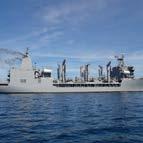
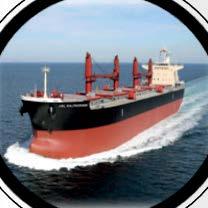
Solomon Islands Port Authority

Over the years, various refurbishment works have been undertaken to help maintain the port and its role in developing the Solomon Islands maritime industry. A key development was outlined in 2024, when SIPA introduced a new terminal operating system at Noro, designed to enhance port operation efficiency and improve the overall efficiency of service delivery. The ‘OCTOPI’ system was implemented at both the Noro and Honiara ports, following months of rigorous preparation and training delivered in collaboration with SIPA staff and key stakeholders. The system is designed to optimise port terminal operations by ensuring the container movements are processed in real time, which will improve the overall management of cargo and vessels. This more detailed view of cargo and vessel movements allows the ports to provide enhanced container handling services, and in the process speed up turnaround times to help position the port as a competitive hub for global shipping.
Speaking on the launch of the new system. Mr Ellison Pade, SIPAS’s Chief Information Officer and Manager of Special Projects, outlines that “We are proud to be the first Port in the region to implement and use this system, which is also a modern and latest system designed for medium-sized port terminals, which suits us well”. Pade continues, “This is a significant investment by SIPA, which puts the Port of Honiara and Noro fast forward into the future in terms of Port Operation efficiency and online container movement processing, which I trust will certainly support the ongoing development expansion and growth of the Port”. Pade’s comments highlight just how valuable the development of such a system is in enhancing the port operation of both the Port of Noro and Honiara to allow them to develop the ports as key shipping hubs supported by the top technology for optimised shipping movements.

In August, SIPA participated in the 47th Pacific Maritime Transport Alliance (PMTA) Conference, which brings together port stakeholders from across the region to discuss the shared challenges facing the sector and to find ways to improve these. CEO of SIPA, Georgia Rausi, was a key panellist at the opening session of the meeting, highlighting SIPA’s effort to address the challenges of the Solomon Islands’ ageing port infrastructure and the role of digitalisation and efficiency improvements for the ports. Rausi highlighted the importance of such events for PMTA; “This conference was an important platform for us to not only share our progress, but also to learn from the experiences of our regional partners. Collaboration is key to building stronger, more resilient Pacific ports that can withstand global challenges and drive economic growth for our island nations.” Rausi’s comments solidify the unifying role of SIPA in enhancing the role of the ports across the Solomon Islands, whilst working alongside key stakeholders of the Pacific maritime sector to deliver the entire region as a hub for global trade.
Overall, SIPA is a vital authority body working across the Solomon Islands to develop the ports of Honiara and Noro into hubs for global maritime development. With each port experiencing vital upgrades in recent years, from physical infrastructure to digital systems, SIPA has been able to position the port of the Solomon Islands as a key gateway from the Pacific region to the world. Therefore, in its mission to develop and promote the Solomon Islands as a premier hub for port and maritime activities in the heart of the South Pacific, SIPA has been largely successful with its delivery of world-class services in logistics, shipping and port management.


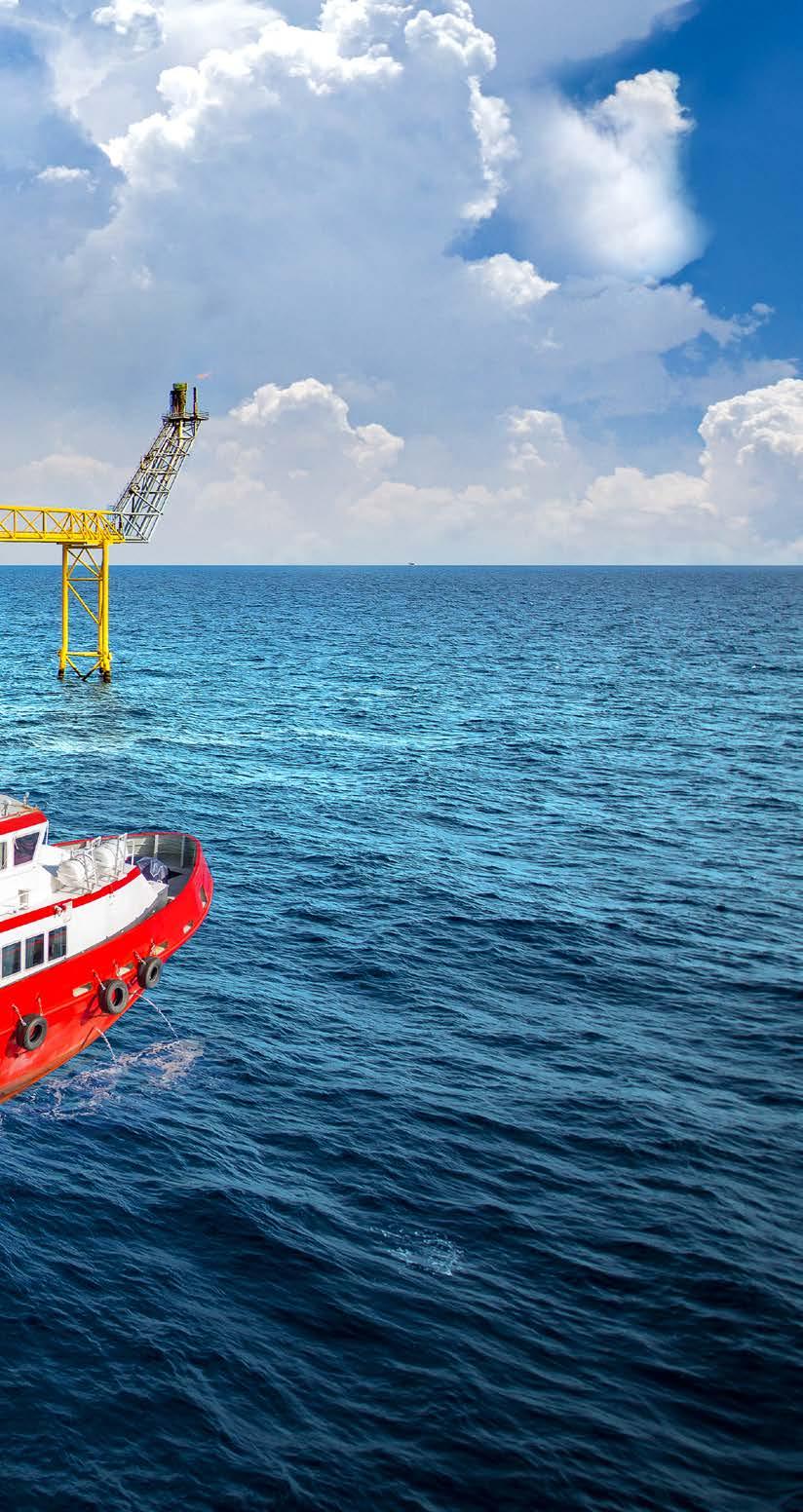
Seatrium Limited
With over 60 years of experience in the energy and marine design and construction sector, Seatrium Limited (Seatrium) delivers innovative engineering solutions that span across the development of offshore platforms, rigs, floating vessels, and specialised vessels, as well as in its delivery of repair, upgrading and conversion services. With these extensive solution offerings, Seatrium serves the maritime and oil and gas industries well, positioning itself as a premier global player offering solutions that are underpinned by the company’s commitment to high standards, safety, sustainability and performance. With such a pivotal reputation within the energy and maritime sectors, Seatrium is now a leading engineering company operating across the world.

The Seatrium we know today was formed when Sembcorp Marine and Keppel Offshore & Marine, two heavyweights in the engineering sector, came together to form a single group that would harness both companies’ extensive expertise and knowledge in the industry. Together, these companies hoped to deliver leading solutions that could better serve their customers and stakeholders by leveraging the synergies between the two companies. Thus, Seatrium was formed in 2023, delivering high-quality and high-performance engineering solutions that are purpose-built to meet its customers’ needs. This innovative approach ensures that Seatrium can continue to work with its clients to develop offshore and maritime solutions that meet their specific needs, enhancing global energy and maritime sectors, whilst solidifying Seatrium’s place as a leading engineering company across the world.
Today, Seatrium’s operations span across the world with the company operating shipyards, engineering centres and technology facilities in places such as Singapore, Brazil, China, India, Indonesia, Japan, Malaysia, the Philippines, Norway, Saudi Arabia, and the United Arab Emirates, the United Kingdom and the United States of America. Across these hubs of operations, Seatrium is set on delivering vital solutions that explore new spaces, technologies and applications even under the most challenging of circumstances. With innovation at the heart of its development, Seatrium’s key business segments include oil and gas new builds and conversions, offshore renewables, repairs and upgrades, and new energies, with a growing focus on sustainability.
For the oil and gas sector, Seatrium delivers complex rigs and turnkey solutions, which are designed to harness the global network to deliver vital energy developments. Its products include the new builds and conversions for Floating Storage and Offloading (FSO) units, Floating Production and Storage (FPSO) Units, Floating Drilling, Production, Storage and Offloading (FDPSO) units, and Mobile Offshore Production Units (MOPUs). In addition to this, Seatrium also delivers gas terminals, Floating Liquefied Natural Gas (FLNG) units, Floating Storage Regasification Unit (FSRU) and Gravifloat solutions, as well as Offshore Oil and Gas Fixed Platforms.

Your One-Stop Solution for Advanced Protection Needs
At Best Technology, we are passionate about innovation and committed to safeguarding life, assets, and the environment. With years of expertise, we’ve emerged as leaders in providing cutting-edge protective solutions.

PROUD SUPPLIERS OF ANCLOZ PRODUCTS:
Ancloz Armourflex: Flexible, removable Passive Fire Protection (PFP) Jackets
Ancloz Androflex: Flexible insulation covers for superior thermal performance
Ancloz Audioflex: Flexible acoustic insulation covers for noise reduction
Designed to protect ESDVs, flanges, and other critical components on FPSOs and industrial sites.
Why
Best Technology Pte Ltd?
Removable: Easy maintenance with hassle-free removal and reinstallation.
Lightweight & Intuitive: Simplified installation, reducing downtime.
Customisable: Tailored to exact site requirements and project needs.
Service & Quality: We pay attention to everything - our product, customers, engineering
CERTIFIED BY









DELIVERING BROAD SPECTRUM OF LNG SOLUTIONS

SSB Cryogenic Services delivers specialized marine and LNG solutions with precision and reliability. From N2 purging operations and Non-Destructive Testing to turnkey LNG project management, our expertise ensures vital operations run safely. Trusted since 2002 for LNG membrane carrier NDT services, we continue to support the region’s expanding LNG fleet with proven skill and commitment.
Backed by SSB Cryogenic Equipment, established in 1996, we operate the largest fleet of T-75 ISO tanks in Southeast Asia, providing complete cryogenic logistics solutions - from ISO tank leasing and maintenance to bulk liquid supply for the gas, marine, and offshore sectors.
SSB Cryogenic Services – Excellence in Service. Leadership in Innovation. Your Partner in Cryogenic, Marine & LNG Solutions
Engineering Excellence

Seatrium has already shown its expertise in this field, with the development of Shell Vito RPF (Regional Production Facility), a deep-water floating production unit that is delivering oil and gas in the Gulf of Mexico. The unit was delivered in late 2021 and is a compact and efficient solution that incorporates advanced technology. Shell Vito RPF was one of the first of two new build FPUs Seatrium has delivered and will provide a great model for future compact, efficient FPU developments within the deep-water sector.
In July, Seatrium further cemented its place as a leading FPSO provider across the world with the delivery of PETROBRAS 78 (P-78) to Brazil’s national oil company, Petróleo Brasileiro S.A. (Petrobras). P-78 delivers a production capacity of 180,000 barrels of oil per day (bopd), 7.2 cubic metres (mcbm) of gas per day, and provides storage capacity for 2 million barrels of oil. The FPSO will be deployed across the Búzios Field, which is one of the most prolific oil and gas deposits offshore Brazil, providing essential oil and gas production for Brazil’s energy sector. P-78 ranks among the largest in the global operating fleet of FPSOs, highlighting Seatrium’s engineering expertise and innovation in delivering the vessel
SSB Cryogenic Services Pte Ltd Precision In Every Test
Delivering reliable cryogenic and marine solutions for the global LNG industry.
SSB Cryogenic Services Pte Ltd (SSBCSPL) specialises in cryogenic and marine solutions, offering Non-Destructive Testing (NDT) for LNG vessels, Nitrogen Purging operations, and LNG project support. Since its inception, the company has completed over 280 onshore and offshore purging and coolingdown operations and conducted NDT on more than 300 LNG carriers worldwide.
SSBCSPL is the first Singapore company certified by Gaztransport & Technigaz (GTT) to conduct Global Testing for LNG membrane vessels. Supported by a skilled in-house engineering team and certified by GTT to perform testing in accordance with its methodologies, the company ensures the highest standards of safety and reliability.
OUR EXPERTISE INCLUDES:
• Global Test
• Secondary Barrier Tightness Test (SBTT)
• Helium Leak Test
• Acoustic Emission Test
• Vacuum Box Test
• Dye Penetrant Test
• Thermal Assessment of Membrane Integrity (TAMI) – in partnership with Actemium
SSBCSPL is also capable of performing Global Test and SBTT for Cargo Containment Systems in gassed-up offshore conditions.
BEYOND TESTING:
The company provides cryogenic bulk liquid supply and ISO tank leasing services, supporting industrial and marine operations with products such as LIN, LOX, LAR, CO2, Ethylene, Helium, Isopentane, Ammonia, Refrigerants and more.
SSBCSPL continues to advance precision, safety, and performance across the global LNG and cryogenic sectors, working with partners and adopting new technologies to strengthen its capabilities and deliver excellence across all projects.

swordtek.com.sg
With software, you can automate documentation to save time, lower risks, and quickly analyze data to make better decisions.
Calibration data is your most valuable asset and with calibration software you can ensure the quality and integrity of the data that your decisions will be based on.
Beamex has over 50 years of experience in developing and delivering calibration technology and expertise. Our world-leading experts and accredited calibration laboratories are here to support you.



Engineering Excellence

to support the energy sectors across the world. In fact, Seatrium has previously delivered FPUs, FPSOs, FSRUs, drill rigs and accommodation vessels to Brazil’s energy sector already, highlighting its robust relationship with the country as a leading engineering solution provider.
Another key sector of Seatrium’s business is focused on offshore renewables and delivering new energy. For this, the company delivers turnkey solutions including fixed platforms, offshore wind and new energy solutions that focus on being cost-effective and highly adaptable, whilst also meeting the highest of technical specifications for global clients. Seatrium delivers offshore wind farm fixed platforms, including High Voltage Direct Current (HVDC) converter stations, High Voltage Alternating Current (HVAC) substations and wind turbine foundations. In addition to this, Seatrium is also focused on delivering Wind Turbine Installation Vessels (WTIVs), Floating Offshore Wind Turbines (FOWTs) and Floating Wind-HVDC and HVAC stations. This focus on delivering engineering solutions for the offshore renewables and new energies sector highlights Seatrium’s commitment to delivering
designs that are helping customers across the world to meet their sustainability goals, and in the process, solidifying Seatrium’s role as a key provider of solutions that are designed with sustainability and emission reduction in mind.
Aside from its role in the offshore energy sector, Seatrium also provide specialised shipbuilding services to deliver high-performance specialised vessels that are designed with the global energy transition and decarbonisation in mind. These vessels are ‘future-proofed’ utilising Seatrium’s award-winning, high-performance and specialised expertise in vessel construction to deliver vessels that meet the highest of technical specifications for clients across the globe, both for today and for the future. However, alongside its development of new vessels, Seatrium is also passionate about repairing and upgrading existing vessels. For this, the company has developed strong relationships with its clients to repair, refurbish, retrofit and extend the life of existing vessels, including FPSOs, FSOs and FSU units. This focus on refurbishment and repairs to existing vessels helps to promote sustainability by utilising existing vessels rather
Seatrium Limited
than developing brand new ones. Ultimately, this helps to extend the lives of vessels already in operation or give them a new purpose to limit the necessity for new vessels to be made to support the planet, whilst saving its customers both money and resources.
In August, Seatrium signed a Letter of Intent (LOI) with Karpowership for the development of 4 New Generation Powerships, with the adoption of two additional units. Karpowership will deliver the hulls and key equipment for the powerships, where Seatrium will complete the bulk of the mechanical and electrical equipment integration, mechanical completion and pre-commissioning work. The agreement also outlines the conversion, life extension and repairs to three existing LNG carriers to deliver them as FSRUs. The LOI marks a milestone agreement between Seatrium and Karpowership and deepens the strategic partnership between the two towards delivering more sustainable, mobile and scalable energy solutions for the future.
Alvin Gan, Executive Vice President of Repairs and Upgrades at Seatrium, outlined the following announcement: “This LOI marks a pivotal step in our journey to build a global franchise in floating power infrastructure. Our successful collaboration with Karpowership goes beyond FSRU conversions – its about enabling energy access through innovative maritime platforms. With four FSRUs delivered, a fifth due later this months, and two more underway, we are proud to be a long-term trusted partner in delivering greener energy and sustainable solutions; through a variety of innovative solutions in new generation powerships, FLNGs, floating battery, floating data centres and water de-salination vessels. These projects demonstrate our engineering excellence


and our commitment to supporting the energy transition”. Gan’s comments highlight just how valuable this LOI is in strengthening Seatrium’s position as a leading engineering and development company for the energy sector. By working with other leaders in the maritime construction and engineering sector, such as Karpowership, the two can leverage their expertise to deliver more sustainable, efficient and reliable power ships for the future of energy development.
Across Seatrium’s operations, there is a primary focus on delivering engineering expertise that
can harness the energy and maritime sector, whilst working to do this in the most sustainable way possible. With sustainability taken into consideration across every single development or redevelopment, Seatrium can play a valuable role in helping its customers deliver the vital resources needed for operations, whilst meeting global sustainability goals. With a plethora of projects and developments under the company’s belt, it’s no surprise that Seatrium is now a leader in the global offshore, marine and energy sectors, focused on engineering for the future.


Hitachi Construction Machinery Co.,
On a mission to deliver innovative products, services and solutions across the construction sector, Hitachi Construction Machinery Co., Ltd. (Hitachi) is a globally expanding construction machinery manufacturer. The construction industry is vital to global infrastructure, with the sector responsible for building roads, houses and laying down waterpipes that are vital for supporting societal development. Therefore, the construction sector relies on innovative and efficient machinery that can help meet these needs across the globe. However, as the world moves towards a more sustainable future, Hitachi is focused on ensuring its products have a longer life cycle and are built with leading technology innovations to contribute towards a more sustainable future for the construction machinery manufacturing sector.

As a subsidiary of the global Hitachi Ltd., Hitachi is focused on bringing a leading worldwide manufacturer of construction equipment. Its role spans across the globe from its head office in Tokyo, to Europe, North America and South America. Today, Hitachi has roughly to 25,000 employees operating across the world who are key to bringing vital development, manufacturing, sales and service operations across the heavy machinery industry. The Hitachi we know today, began over 70 years ago following the start of its mass production of its cable operated shovels in the 1950s. This development was born from a mission to make construction work more efficient across Japan through the mechanisation of its construction machinery, to help rebuild the country and revitalise the economy. Therefore, Hitachi developed and delivered the first capable operated shovel using entirely domestic technology. This innovative spirit remains with the company today, and this is why the Hitachi brand remains a leader across the construction and mining machinery manufacturing sector.
Today, Hitachi’s machinery spans from mini excavators, mini wheel loaders, hydraulic excavators, wheel loads, compaction equipment, large hydraulic excavators, ultra large hydraulic excavators and rigid dump trucks.
Across these products, Hitachi is passionate about delivery top of the line manufacturing supported by leading solutions which maximise the value of its products. These solutions include its Autonomous Haulage System (AHS) which aims to address the challenge of safety across global mining and construction sites. AHS allows machinery to be safer, more productive and reduce costs over time by utilising Hitachi’s 24/7 system and field communication support that is integrated into its product lines. Therefore, Hitachi machinery can provide customers with low risk, staged implementation machinery that can operate efficiently alongside its customers’ existing fleet. AHS is then paired with Hitachi’s Fleet Management System (FMS) which is provided by Wenco International Mining Systems Ltd. under Hitachi. This solution ensures the real-time monitoring of each piece of machinery to enhance fleet management and utilise IoT platforms to optimise mining and construction processes, whilst utilising a wide range of data acquired through the integration of FMS across its product lines.
For construction machinery specifically, Hitachi has a Construction Machinery Solution Linage, which is an ICT/IoT system to help improve the safety and productivity of a product, whilst reducing its costs over its life cycle. It achieves this by bringing together the broad knowledge and advanced technologies from across Hitachi’s expertise, to deliver construction machinery that is designed to deliver results for its customers. Hitachi Construction Machinery ICT Solution is designed to fully support all ICT aspects of construction operations, taking projects from initial construction surveys to as-built data drive operations. A key development for this is the ICT Hydraulic Excavator ZX200X-7 which has been made with safety and construction efficiency in mind, to ensure that no matter the skill level of the operator, it will utilise its ICT system to deliver highly accurate, efficient and productive work every time.
To ensure the operational efficiency of machinery, Hitachi has developed ConSite, a solution which monitors the operational status of machinery and its alarms through operations reports. These reports and notifying alarms, ensure

The Future of Construction Machinery

that machinery can continue to run optimally and meet it customers needs. The entire ConSite report, is designed to keep customers continually informed about the operational status of a machine, which can then be easily accessed with a smart phone. In fact, ConSite has the ConSite app which helps customers oversee daily inspection and help with both owned and rental machinery. Then Hitachi operates ConSite Air, which is a remote service helping Hitachi keep an eye on its customers machinery remotely, to more effectively meets customers’ needs and deliver operational support. All of these solutions highlight Hitachi’s

WE ARE YOUR ONE STOP SOLUTION FOR PRECISION SHEET METAL PARTS AND ASSEMBLIES
Manufacture sheet metal parts and assemblies for Air Compressors, Earth Moving machines, Image and video processing machines, Power Generators, Medical equipment, Architectural signages and furniture, Banking Kiosks and ATM’s and Machine Tool Guardings etc.




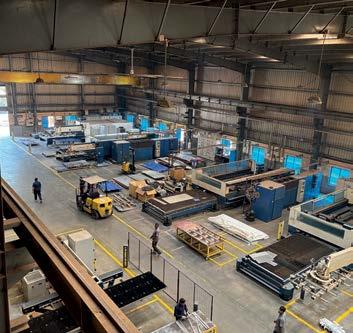


Hitachi Construction Machinery Co., Ltd.
Edbro are proud to work in partnership with Hitachi supplying cylinders for some of the toughest mining trucks in the world.
The world’s toughest mining trucks demand the world’s toughest cylinders. Edbro, a UK based cylinder manufacturer part of the Orsan group of companies, have been a key partner to Hitachi on that front for more than 30 years.
Edbro and Orsan are proud to work in partnership with Hitachi supplying cylinders for some of the toughest mining trucks in the world.
Hitachi works with key suppliers such as Edbro to ensure ongoing product development of the hydraulic cylinders used on its mining trucks allow the Hitachi dump truck range to meet the toughest challenges.
Long term partnerships lead to market leading products, Edbro have supplied Hitachi dump truck cylinders for more than 30 years. Ongoing development and field experience has refined the designs and material used to provide the highest levels of reliability.
goal to deliver machinery products that focused on delivering safety, efficiency, management and optimised performance to keep project sites running smoothly.
As Hitachi moves towards the future, it has set out a Bulidng the Future 2025 plan, which began in April 2023. The plan outlines how Hitachi wants to grow as a true solutions partner, and over the last 2 years this has been the foundation for the company’s machinery and solution development. These developments are outlined in the plan to be innovative and customer-oriented, and through this adding to the expansion of its operations. A key part of this has been in Hitachi’s value chain business which consists of parts and services, remanufacturing of used parts and machinery and the rental of equipment. Plus, with the evergrowing issue of climate change, Hitachi has been set on expanding the life cycle of its products and contributing towards a more safe and sustainable society by extending the life of its machinery through remanufacturing, and the ability to rent machinery rather than purchase them. This
World class cylinders for world class trucks







prevents unnecessary machinery from going to waste, enhancing the performance of mahcinery whilst in operation, and then when parts go wrong, remanufacturing to extend the life of the machinery to reduce over production and in turn help keep its customers costs low.
In April, Hitachi announced that it had launched LANDCROS Connect Insight Solution, which aims to analyse the operational data of mining machinery collected in near-real time to help customers increase the efficiency of their operations. The solutions build on Hitachi’s experience and then utilises real-time data to support further detailed analysis backed by data scientists, mechanical engineers and other consultants in the mining field, to assist customers and dealers in proposals to help maximise the performance of its machinery.
LANDCROS Connect Insight, will allow Hitachi to build a digital platform that is capable of centrally managing and interlinking data with customers, group companies and collaborating business partners to deliver solutions that will continue to optimize its machinery, particularly in the mining sector.
The Future of Construction Machinery

Across Hitachi’s manufacturing developments, there is a real passion for the planet in delivering the vital machinery and tools to make infrastructural developments possible, all whilst achieving these in the most sustainable way possible. With a range of leading solutions under its belt that help to enhance its machinery and almost 70 years of expertise in the construction sector, Hitachi construction is delivering vital machinery that can deliver the future of the construction sector. We look forward to seeing how Hitachi will continue to expand its innovative solutions to optimise its machinery offerings, and deliver products that meet the needs of today without compromising the world of the future.

Mr. Ashok Punjani – Director +91 9350186940 admin@carrierengineers.com ak.punjani@yahoo.com www.carrierengineers.com
MANUFACTURERS OF
















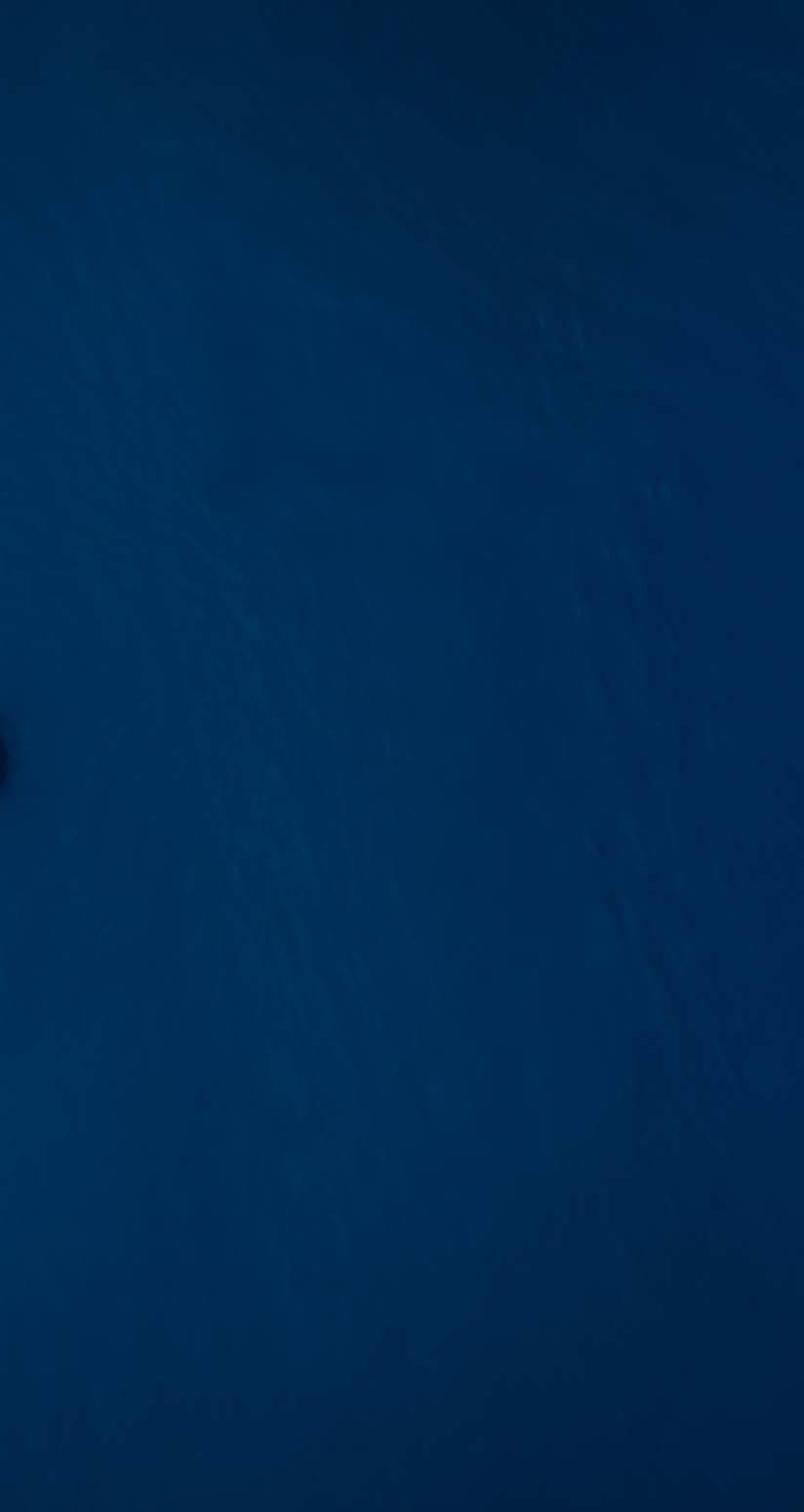
Thai International Freight Forwarders Association
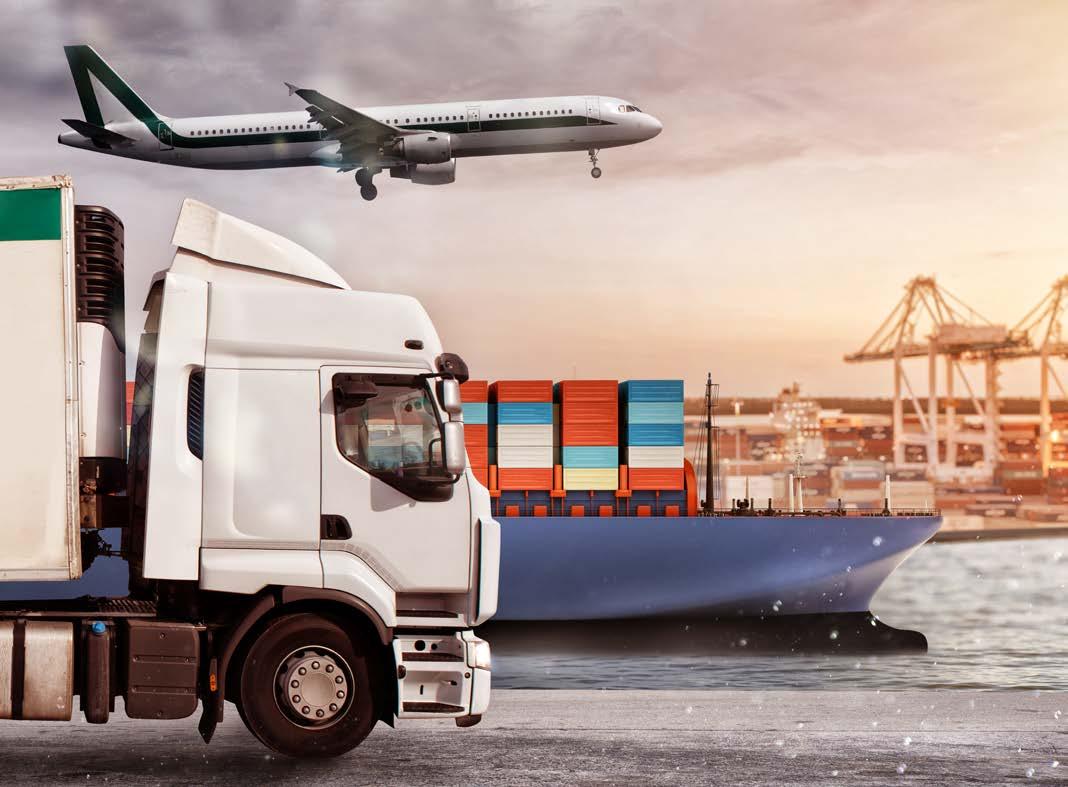
On a mission to deliver Thailand as a key logistics hub operating across Asia, the Thai International Freight Forwarder Association (TIFFA) brings together the key players within the country’s freight forwarding industry under one governing body to build regional growth and strengthen the country’s role as a cargo shipping partner of choice. With operations spanning more than 35 years, TIFFA focuses on networking, education and industry development to ensure that every member operating under the association meets the highest standards in the freight forwarding sector to deliver Thailand as a leading logistics hub operating across the Association of Southeast Asian Nations (ASEAN).
TIFFA was established in March 1987 by a group of freight forwarders operating across the country who saw the need for a fixed body that could help deliver more regulation, structure and reliability for the country’s freight forwarding industry. This need for a governing body was so crucial, as previous to the establishment of TIFFA, Thailand had seen a vast surge in cargo imports and exports across the country; however, the freight forwarding activities were not well recognised and instead were viewed as a kind of brokerage service from the perspective of the government and private sectors. Therefore, the original members of the association submitted the proposal for a freight forwarders association to the Board of Trade in Thailand (BoT), which was fully supported and then registered with the Ministry of Commerce. After this registration, TIFFA was officially inaugurated in March 1987 and saw an increase in members joining the association over the coming years.
The establishment of TIFFA was vital for many industries across Thailand, including the electronics, agriculture, furniture, and manufacturing sectors, which all relied heavily on the reliable movement of goods both across Thailand and international markets for the country’s economy. However, one of the most vital industries that TIFFA benefited is the
automotive industry of Thailand, which saw many car parts arriving in the country from overseas, which would then be assembled in Thailand and sent throughout the country via freight links to ports for international shipping. Therefore, as the automotive industry was so lucrative for Thailand, the founding freight forwarding companies of TIFFA needed a way to ensure that the movement of such valuable cargo was supported by the same regulatory standards seen across the world, to ensure its exports remained competitive in global markets.
Today, TIFFA is home to over 250 members, ranging from ordinary to association members. TIFFA members all have the same combined goal of developing the country’s freight forwarding industry to keep cargo moving throughout Thailand and onto end markets through seamless supply chains. Since its establishment, TIFFA has continued to benefit Thailand, providing essential structure, regulation and support to its members. Ordinary members gain access to utilisation of the TIFFA logo to signify their role with the association, as well as things such as







Thai International Freight Forwarders Association
WCAworld
With over 12,800 member offices in 196 countries, WCAworld is the largest network of independent freight forwarders. Our members work together across borders and industries, sharing resources, expertise, and opportunities. It’s not just about moving cargo, it’s about building lasting partnerships. In WCAworld, independence doesn’t mean going it alone. It means going further, together.
www.wcaworld.com

group liability insurance, logistics news, networking, training and education. For TIFFA, education and training are some of the most valuable aspects of its membership, because through these, TIFFA can help shape the future of Thailand’s freight forwarding industry.
To support education and training across the Association, TIFFA has established the International Transport and Business Academic Institute. The school provides essential education on both practical and theoretical training, which is vital to helping its members grow within both the local and global freight forwarding industry. Thus, by delivering expertise, education and knowledge across its members, TIFFFA can create a more experienced workforce for the country that is ready to transform the future of Thailand’s freight forwarding industry.
In recent years, TIFFA introduced the TIFFA MARK certification, which outlines a standard assessment to develop the quality of its member services by assessing logistics business quality standards. The role of the TIFFA MARK is to help raise

Uniting Thailand’s Freight Forwarders

the quality of management of international freight forwarding, set a foundation for freight forwarding to operate on both locally and internationally, and to help promote recognition from both government and private sectors across the world of a member’s international freight forwarding business. Members with this certification highlight their expertise in the freight forwarding space, and so these businesses gain international recognition for their excellence within the sector.
When we last covered TIFFA, we highlighted its work across the Inland Container Depot (ICD) Lat Krabang, where the Association had been granted a 10-year concession from the State Railway of Thailand to operate and manage the facility. The ICD is one of the most active terminals in Bangkok, and so TIFFA’s role in managing the facility is pivotal for the country’s freight forwarding operation, providing its members with access to international markets via the ICD’s integrated service offerings. In recent months, TIFFA launched a new ICD station in the Lat Krabang area named the TIFFA Logistics Centre. The Logistics Centre will help TIFFA enhance its network and offer more options for connecting freight transport between the central region and Thailand’s major container port.
The introduction of the new TIFFA Logistics Centre follows the expansion of manufacturing
sectors across the country, with the introduction of the Eastern Economic Corridor (EEC) project. The data from this project highlighted that the central and nearby regions were vital for importing and exporting, and so the development of the new Logistics Centre would meet these needs. The new Logistics Centre will help TIFFA deliver even greater opportunities for its members to serve international and local markets, operating as a new strategic hub for multimodal transport operating between Thailand and neighbouring countries. Equipped with comprehensive services, the TIFFA Logistics Centre has the capacity to handle up to 25,000 Twentyequivalent units (TEUs) per month or 300,000 TEUs per year.
Across TIFFA’s operations, there is a real focus on enhancing the country’s freight forwarding business to deliver it as a vital hub serving marketing across the ASEAN and beyond. With the development of education, the TIFFA MARK certification, and the introduction of new ICD facilities, TIFFA is continually striving to provide its members, and in turn, the country’s freight forwarding industry, with the vital tools and resources to thrive. We look forward to seeing how TIFFA will continue to expand its offering across the country, to further position the Association and its members as a leading logistics hub.




Newmont Corporation Australia
Home to substantial gold reserves, Australia is the third-largest gold producer in the world with a long history in the gold mining sector. For this reason, Newmont Corporation, the world’s leading gold company, has been operating within the Australia’s gold mining sector since 2002. Now with over 20 years of experience within Australia’s mining sector, the bulk of its operations here can be broken down into three distinctive mine operations: Boddington, Cadia, and Tanami. Across these mines, Newmont utilises the company’s over a century of expertise in the global mining sector, to deliver vital gold and metal resources for the Australian metals market.
Some of the most lucrative deposits of gold in Australia are found in the West, where there are a plethora of greenstone belts. Here, Newmont operates the Boddington mine, the largest gold mine in the country based on production, within the Saddleback Greenstone Belt. The mine is a large-scale gold and copper surface mine just 30km from Perth. Commercial production at the mine began in 2009, with the operation reaching 1 million ounces of gold by March 2011. Since it began production, the mine has consistently produced more than 800,000 gold equivalent ounces (GEOs) a year. By 2022, the mine had reached more than 1 million GEOs for the first time in its history, largely thanks to its fully autonomous fleet, which operates within the mine. The fleet, which Newmont invested $150 million in as part of its Autonomous Haulage Project, works across the south pit, which is currently the deepest open pit in the world to deploy such automation technology. However, it is this focus on technological innovation that has long made Newmont a heavyweight in the mining sector.

The development of automation across Newmont’s fleet has significantly reduced the fleet size at Boddington from 46 trucks to just 41 automated vehicles, allowing for a non-segregated haulage network with shorter and more optimised haulage distances. The introduction of automation was part of Newmont’s wider Full Potential program which is designed to encourage new ways of thinking that could push its mines to deliver greater value utilising best practices. The program set out to reduce costs whilst generating productivity improvements, and since 2013, it has generated more than $700 million in value for the mine. Through the program, Newmont has been able to push beyond Boddington’s nameplate capacity of 35 metric tonnes and has processed more than 40 million metric tons whilst adding another 2 years to the mine life. Alongside its significant productivity output, the automated system greatly improves safety and productivity at the mine, making it both an efficient and safety-focused mine delivering significant resources for the future.
The Cadia Mine is another of Australia’s largest gold mining operations and encompasses an underground mine producing both copper and gold. The mine has ore reserves of 15 million ounces (Moz) of gold and 2.6 mega tons (Mt) of copper. The mine site includes the Cadia East Underground Mine, as well as the Cadia Hill Pit Tailing Storage Facility and the Ridgeway Underground Mine, but the latter two are currently on current in care and maintenance. Mining in Cadia East commenced commercial production in 2013, and



PARTS ENGINEERED TO PERFORM IN HARDROCK MINING


SURFACE PARTS SPOTLIGHT



MASPRO is a leading provider of cutting-edge engineering solutions for underground and surface operations in the hard rock mining industry. What sets us apart is our unwavering commitment to optimising the parts we produce to increase safety and reliability. Our team works closely with customers to ensure that their machinery performs at its peak, even in the harshest mining conditions. If you’re looking to drill deeper, move more ore, and push your equipment to the limits while maintaining the highest standards of safety and operational reliability, talk to the MASPRO team today!





UNDERGROUND PARTS SPOTLIGHT













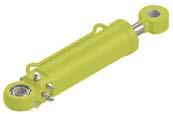






Newmont Corporation Australia
PETRO Industrial – Proven Fuel & Lubrication Expertise
PETRO Industrial delivers world-class fuel farm and lubrication storage & dispensing solutions, engineered for the demands of major mining operations. From design and manufacture to installation, commissioning, and ongoing service, we provide turnkey systems backed by advanced fuel management and secure cloudbased data storage.
Our engineering capability ensures reliability, compliance, and efficiency in every project. Whether buying outright or hiring, PETRO offers flexible options tailored to site requirements. Trusted in the mining industry.
PETRO is your partner in powering productivity.

utilises panel caving mining techniques to access one of the largest gold and copper deposits in the world. Gold is produced in the form of gold doré bars via a gravity circuit and gold-rich copper concentrates from a flotation circuit. In the 2023 fiscal year, Cadia produced 597 thousand ounces (Koz) of gold at an allin sustaining cost of $45 per ounce.
Developing the Cadia mine has been of high importance to Newmont in recent years, with the Panel Cave (PC) 1-2 Feasibility Study approved for execution in November 2022. The project’s PC1 and PC2 are currently being developed to recover a substantial portion of Cadia’s ore reserves, with the first ore from PC 2-3 already delivered. The entire PC1-2 project aims to recover approximately 5.9 million ounces of gold services and 2.9 billion pounds of copper services. This development is expected to continue into the second half of 2026 to deliver significant resources for Newmont from the Cadia mine.

Image credit: PETRO Industrial
Creating Value in Australia’s Mining Industry
One of the central missions of Newmont Corporation is to create value and improve lives through sustainable and responsible mining. This focus can be clearly seen at the Cadia Mine, as it was awarded both The Copper Mark and The Molybdenum Mark in October 2024. These certifications are awarded to companies to recognise responsible production. For Newmont, this is the first mine site for the company that has received the award. The certification is awarded based on an operation meeting more than 30 criteria in critical areas such as environment, community, human rights, and governance.
Cadia is also the only mine in Australia producing molybdenum, and so is the only mine in the country to be awarded The Molybdenum Mark. In the announcement of the awarding to Cadia, Suzy Retallack, Newmont Chief Safety and Sustainability Officer, outlined, “We take great pride in being at the forefront of the copper industry with The Copper mark, which highlights our dedication to responsible production and transparency. Retallack continues, “This means our global customers can now choose to source copper concentrate from an independently evaluated mine that meets the highest standards in environmental, social, and governance practices, responding to the increasing demand for sustainable supply chains”. Retallack’s comments highlight just how vital this mark and The Molybdenum Mark are for the competitiveness of Newmont’s copper and molybdenum resources for global markets. Customers across the world can source these resources from a mine that is known for operating with sustainability and responsibility at the forefront. This makes Cadia’s resources highly valuable for global supply chains and, in turn, develops Australia’s minerals industry.
The final mine operated by Newmont in Australia is the Tanami mine, where the company has been delivering vital gold resources since 2002. The mine is located in the remote Tanami Desert of Australia, within the Aboriginal freehold land that is owned by the Warlpiri people and managed on their behalf by the Central Desert Aboriginal Lands Trust. The mine is in one of the most remote locations in Australia, and so access to Tanami is via a fly-in-flyout basis. The mine began operation more than 20 years ago as an open-pit operation, which over the years has been transformed into one of the largest underground gold mines in Australia, with more than 12 million ounces of gold produced.
Like with the other mines operated by Newmont in Australia, the Tanami mine is undergoing expansion
works to increase the gold production of the mine. Newmont is currently working on the second expansion of Tanami, with investment towards constructing a 1.5-kilometre-deep production shaft. Tanami Expansion 2 aims to increase the average gold production of the mine from roughly 150,000 -200,000 ounces a year to 600,000 ounces per year for the first five years. Whilst expanding the production capacity, the development also hopes to reduce operating costs by around 10%. The main scope of the expansion involves the construction of a headframe and vertical hoisting shaft to a depth of 1,460m to transport people and ore out of the mine.
As part of the expansion, Newmont entered into a strategic alliance with Caterpillar in 2021 to help deliver a fully connected, automated, zerocarbon-emitting, end-to-end mining system. Thus, with this partnership, Newmont can deliver a more technologically advanced mine to optimise production. Newmont’s partnership with Caterpillar aims to develop new battery electric haulage technology for its underground mining, and following the introduction of battery autonomous technology, which will be an industry first for the mine.
Across all three of Newmont’s mine sites in Australia, the company is focused on delivering vital mineral resources in a sustainable and communityfocused way. Newmont is committed to building respectful and mutually beneficial relationships with the communities that surround its operations. By working with local communities, the mines can help deliver long-term economic and social growth. Each mining operation under Newmont has a dedicated community relations team, and through these, Newmont is passionate about maintaining an ongoing dialogue between all stakeholders to ensure positive community growth.
What we can see from Newmont’s operations in Australia is a firm commitment to delivering value through responsible, efficient and communityfocused mining operations. Across Boddington, Cadia and Tanami, there is a keen sense of growth to harness the production of gold and copper for today, whilst delivering the infrastructure and techniques to optimise production for many years to come. With some of the largest mining operations under its portfolio in Australia, Newmont is set to deliver vital resources for the country, supported by its expertise on a global scale, to make its supply chains competitive and mining operations technologically advanced.


MODEC Offshore Production Systems Pte Ltd.

MODEC has been operating as a leading provider of solutions to the floating offshore oil and gas market for more than 50 years. Across this vast history, MODEC has been on a mission to unlock the potential of the ocean and deliver vital resources that will benefit humanity. MODEC achieves this through its delivery of engineering, procurement, construction, and installation (EPCI) services to the offshore sector, supported by innovative technologies which work together to help meet the challenges of the energy sector across the globe. In recent years, Singapore has remained a valuable market for the company’s development, with MODEC Offshore Production Systems (Singapore) Pte Ltd. working to provide valuable support to energy developments across Singapore and the surrounding regions.
Since 1968, the global MODEC Group has been a leader in the floating solutions market for the offshore oil and gas industry. Many of these solutions include Floating Production Storage and Offloading (FPSO) or Floating Storage and Offloading (FSO) vessels, which are essential for supporting the delivery of energy to markets by enabling oil and gas companies worldwide to extract resources from wells and transfer them through pipelines to these vessels, where they can then be distributed across the local region. However, with most wells situated in deep offshore waters, they are often exposed to harsh conditions. Therefore, MODEC is dedicated to providing solutions that address the unique and challenging conditions of its clients’ deposits to supply vital energy, and with it, ensure customer satisfaction.
In Singapore, MODEC Offshore Production Systems is committed to providing EPCI services and, with it, the delivery of FPSOs and other floating production systems. MODEC Offshore Production Systems often works alongside Offshore Frontier Solutions Pte Ltd., a MODEC Group Company, to handle the EPCI aspects, whilst the wider MODEC group offers engineering support for oil and gas extraction and offshore exploration in Singapore. MODEC’s operations through these two subsidiaries bring vital offshore solutions to the energy sector in Singapore, and through this to the wider region.
In fact, in recent months, MODEC Offshore Production Systems announced that it was opening a new execution centre in Kuala Lumpur. The centre will be facilitated by Offshore Frontier Solutions, part of the MODEC Group, who will be responsible for supervising subcontracting detailed engineering activities, whilst overseeing the hull and module construction works. These will be completed at local shipyards, which will help manage offshore installation and commissioning activities. The centre will be the heart of MODEC’s Front-End Engineering Design (FEED), Pre-FEED execution, project proposals, research and development, as well as digital analytics. Through this execution centre, MODEC will be able to deliver innovative and efficient solutions for the benefit of its clients both in Malaysia and across the world.
The first project to be achieved by the Execution Centre will be the FPSO Gato do Mato project. The project will be delivered for Shell Brasil Petróleo Ltda, which awarded the development to MODEC in March. Whilst the final project will be located offshore Brazil, the development and construction of the FPSO will be facilitated by MODEC via the execution centre in Malaysia. Thus, the centre serves as a vital development hub in the heart of Kuala Lumpur, strategically positioned and supported by the necessary facilities to become a key driver of MODEC’s growth across the region. Through the leveraging of MODEC’s skilled workforce across the facility, the company is well-positioned to meet the evolving needs of its clients and the global energy industry.
The development of the Execution Centre in Kuala Lumpur adds to MODEC’s global capability centre, which it developed in Bengaluru in India. MODEC announced in October 2024 that Offshore Frontier Solutions has partnered with Toyo Engineering India Private Limited. The joint venture company, TOTO MODEC OFS India Private Limited (OFS India), will execute the FEED and detailed engineering and provide procurement support for the topsides of FPSO projects among its primary business activities. The Global Capability Centre opened officially in June 2025, and both the capability centre and execution centre highlight MODEC’s growing role across the region to enhance the delivery of energy solutions across the world.



INNOVATION BEHIND EVERY VALVE
Trusted Valve & Piping Solutions for FPSO Projects
Since 2006, Valves & Piping Asia (VPA) has been a leading supplier of highperformance valves, piping products, and engineered components for Offshore/ Onshore & FPSO applications. With a proven track record of over 40,000 valves on major Petrobras projects (FPSO P-Series) 2021-2025, VPA delivers certified, reliable solutions built to withstand extreme offshore conditions.
• API & ISO Certified • Up to 10,000 PSI & ANSI 2500
• Carbon Steel, Stainless Steel, Super Duplex & Inconel Options
• Strategic Partnerships with Top Chinese Manufacturers
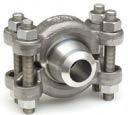

MODEC Offshore Production Systems Pte Ltd.
This growing role was highlighted by Soichi Ide, President and CEO of Offshore Frontier Solutions,
“These strategic moves are part of the company’s expansion plan to continue to extend our capability and services to support our global clients. Besides enhancing our global footprint, OFS India and OFS Malaysia allow us to adapt quickly to changing business needs and market demands. They also provide access to a diverse pool of skilled professionals that we can tap into to boost our expertise and innovation”.
Ide’s comments bring into focus the vital and comprehensive role that MODEC can provide to the offshore energy industry, and through such vital developments across Malaysia and India, reinforced Singapore’s role as a leading energy solutions provider.
At present, the global MODEC Group currently has 20 FPSOs and FSOs in operation at offshore fields in places such as West Africa, Asia, Oceania, the Gulf Coast of Mexico, South America, Brazil and the North


Sea. Across these projects, MODEC delivers the best services possible through turnkey solutions that harness the energy potential across the world. By ensuring that its vessels are equipped to manage the often-harsh conditions, MODEC ensures that each project’s life cycle is maximised to deliver significant returns for the customer and the global energy industry in the process.
To remain ahead of its competition, MODEC continues to develop its FPSO and FSO solutions, and in recent years has developed two new types of hulls that are designed to optimise the future of offshore energy development. These vessels bring together MODEC’s best-in-class design and construction technology to deliver top-of-the-line FPSO and FSO projects that will see the next generation of energy production. One particular development of note is the M350™ and the MODEC NOAH™, which will help it take its energy development potential to the next level through their innovative hull designs. However, aside from its development of new hull designs, MODEC also has a key role in converting oil tankers into FPSOs and FSOs. The company has been redeveloping oil tankers for over 40 years and has built a strong reputation within the global market as a leading oil tanker conversion company.
In achieving its delivery of new and redeveloped FPSO and FSO vessels, MODEC relies on its network of shipbuilders and shipyards around the world to fully implement its EPCI works on its projects. Across its global network, MODEC has more than 6000 employees across 15 countries worldwide who help it to achieve its project visions. In addition to this, MODEC also relies on outsourced shipyards and companies that help it achieve its projects using local knowledge and expertise. Through this network, MODEC can maintain its competitive lowprice points and achieve greater flexibility across its operations by building and developing FPSO and FSO vessels utilising its connections on both a local and international scale.
What we can see across MODEC operations, both on a global scale and specifically in Singapore, is that the delivery of high-quality and innovative floating solutions is allowing the company to position itself as a leading offshore floating solutions provider for the oil and gas industry. Through the execution of facilities, cutting-edge technology and innovative FPSO/FSO vessels, MODEC is set on delivering a world where the oceans’ potential is harnessed to support humanity, aided by global subsidiaries that are vital in expanding its network across the world.





WHEN FIRE STRIKES, SECONDS MATTER




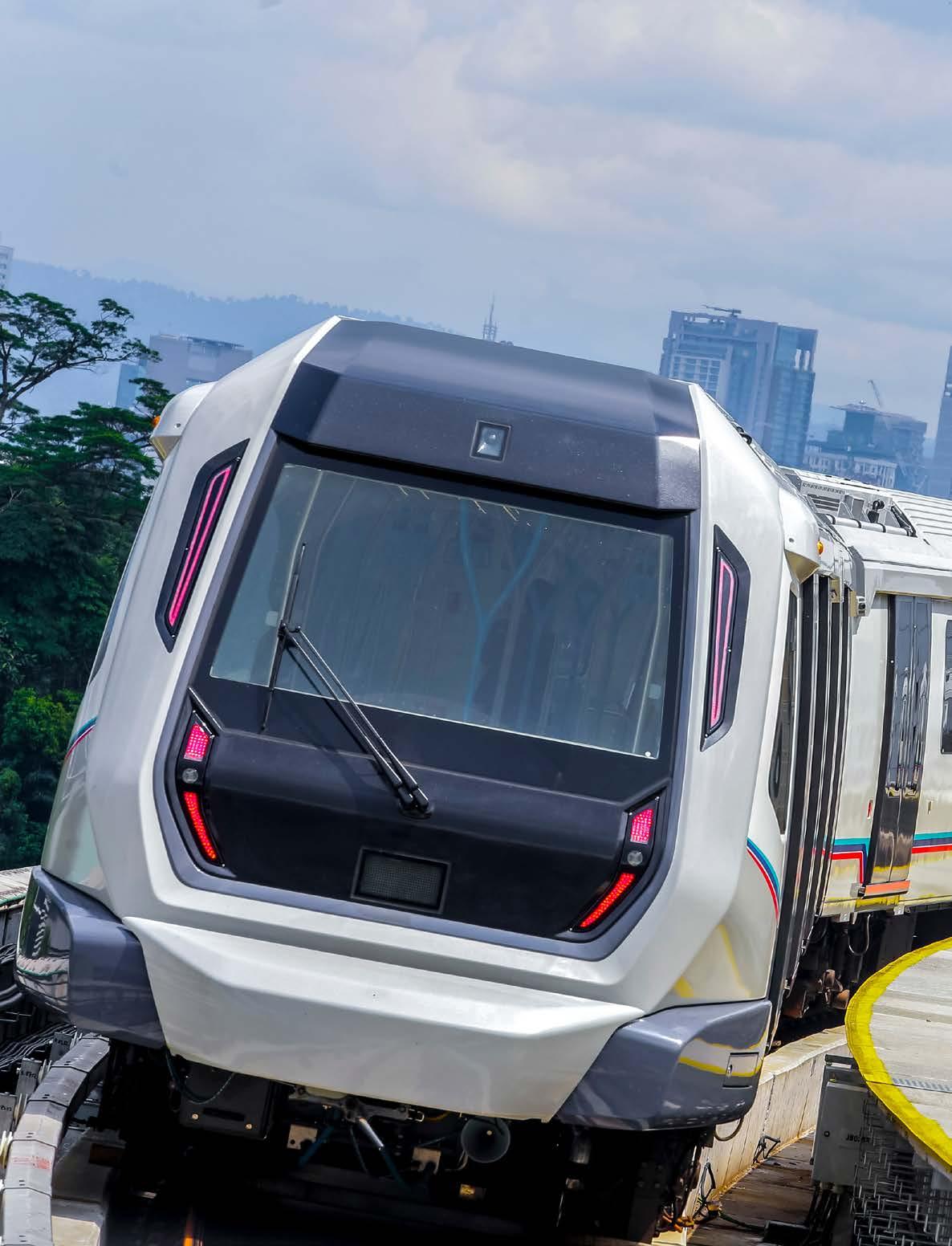

Malaysia Rail Industry Corporation

The railway network of Malaysia is vital to the country’s infrastructure, helping both people and materials move across the country and beyond to adjoining networks in neighbouring countries. With this network being vital to Malaysia’s interconnectivity, the need to bring together vital stakeholders and governmental figures has long been essential to maintain the railway network so it can remain efficient, safe and sustainable. Therefore, the Malaysia Rail Industry Corporation (MARIC) was formed in 2017 to contribute to the development of engineering across the Malaysian railway system through the support, unification and network provided by its members.
MARIC began operations in 2017 following the formation of the incorporated association to provide membership to all companies operating across Malaysia’s railway systems engineering and associated works sector. MARIC currently has 60 member companies spanning the country’s railway engineering sector. However, some members also include public transportation companies, communication companies, transitoriented development companies and services, as well as those within the railway infrastructure construction sector. These additional members are vital in helping the core engineering companies to facilitate the development of the country’s railway network. Across the company’s network, there are more than 5,000 personnel who are engaged across all aspects of the railway engineering network from construction, rehabilitation, maintenance, repair and overhaul (MRO), and public-private partnerships (PPP). These members are vital in helping MARIC achieve its goals to deliver a cohesive, developed and comprehensive rail network for the country.
For MARIC, it is particularly focused on engineering clusters, which include Rolling Stone, Signalling Systems, Telecommunication Systems (including SCADA), Power Supply and Distribution Systems (PSDS), Trackwork, Depot Equipment, and Automatic Fare Collection (AFC) systems. These systems are vital to helping MAIRC continue to improve Malaysia’s railway reliability and sustainability. In fact, across these, MAIRC is passionate about developing relationships with local suppliers and vendors to help manage the MRO and construction, rehabilitation, mid-life refurbishments and component supplies for activities in the future pertaining to the rail network.
The central mission of MARIC is to foster collaboration across all levels of the rail supply chain network and, through this collaboration, enhance productivity and deliver great value for the country’s railways. The importance of Malaysia’s

Enhancing Malaysia’s Railway Network
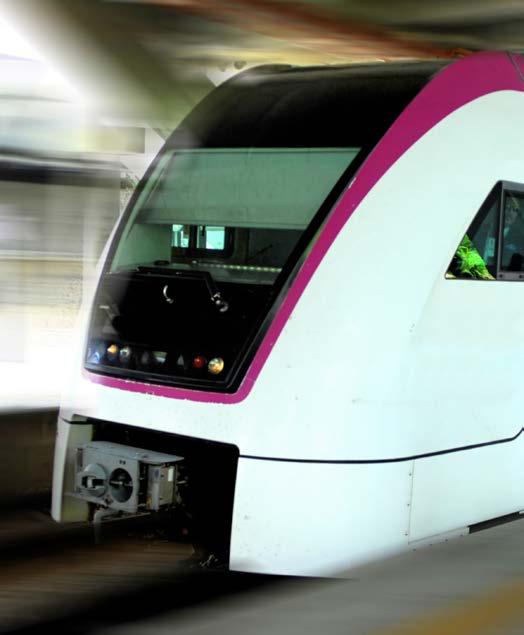
MANUFACTURER FROM CONCEPT TO COMPLETION - PRECISION IN EVERY LAYER
At DK Composites Sdn Bhd, we turn bold visions into reality with cutting-edge technology, advanced engineering, and world-class craftsmanship. Since 1997, we've been at the forefront of highend composite manufacturing, proudly operating from Composites Tech City, Batu Berendam.
From awe-inspiring architectural domes to high-performance marine vessels and next-gen transport solutions, our expertise spans:
• Design, Development & Installation
• Composite Structures – Cladding & Domes
• Marine Composites – Racing Yachts & Power Boats
• Modular Housing
• Rail, Transport & Electric Vehicles
Trusted by clients across Europe, the Middle East, the USA, Asia and Australia, we deliver precision, durability, and innovation — every time.

Malaysia Rail Industry Corporation


network and its local supply chains to enhance the system is outlined by Anthony Loke, Minister of Transport in Malaysia, with his message, “Every rail project presents unique opportunities to further the capacity and capabilities of the local rail industry. Whilst the primary goal is to develop infrastructure and systems that enable efficient rail services, these projects must also serve as a catalyst for advancing innovation, developing talent, and empowering local players”.
Loke also outlines in his message on the MARIC website, “implementing a partnership model between local players and like-minded foreign OEMS will ensure a win-win outcome and help create a sustainable rail industry ecosystem that can effectively support the operations and maintenance of these systems throughout their life cycle”. Loke’s message outlines how the rail industry is behind vital development for Malaysia, and through its collaboration with local and international like-minded companies and governmental figures, MAIRC can deliver these projects for the benefit of Malaysia and its supply chains overall.
A key way that MARIC is sharing its mission to enhance and develop Malaysia’s railway engineering network is through education and networking events. To achieve this, MAIRC hosts seminars, symposiums, exhibitions, familiarisation programs, Export Acceleration Missions (EAMs), and business match operations to grow the company’s network and member sphere. This focus on education and networking was highlighted in March with the announcement of MARIC partnering with the University of Kuala Lumpur.
MARIC and the University signed a Memorandum of Agreement (MoA), which will focus on the Peneraju Skil Plus Professional Rolling Stock Maintenance program at the university, which is aligned with the national workforce development initiatives. It is hoped that through the partnership, the University will provide essential academic and technical training in the knowledge and practical skills needed to maintain and develop the railway sector. Thus, the program will promote the future leaders
Enhancing Malaysia’s Railway Network
of the rail network and bridge the gap between academics and the railway industry. Therefore, the partnership shows MARIC’s investment in the next generation of rail engineering to ensure that the railway will remain the mode of transport of choice across Malaysia.
What we have seen across the operations of MARIC is a firm commitment to investing in the development of Malaysia’s rail engineering sector. The railway engineering industry is so vital to keeping the railway network running smoothly, and so MARIC’s work is invaluable in keeping transportation links and supply chains on track. Therefore, by focusing on networking, education, and unification with other vital stakeholders within the industry, MARIC is able to promote the vital work of the sector and help keep Malaysia’s railways safe, reliable and sustainable. We look forward to seeing MARIC continue work with the government, local stakeholders and international OEMS to deliver a more enhanced rail network for Malaysia.

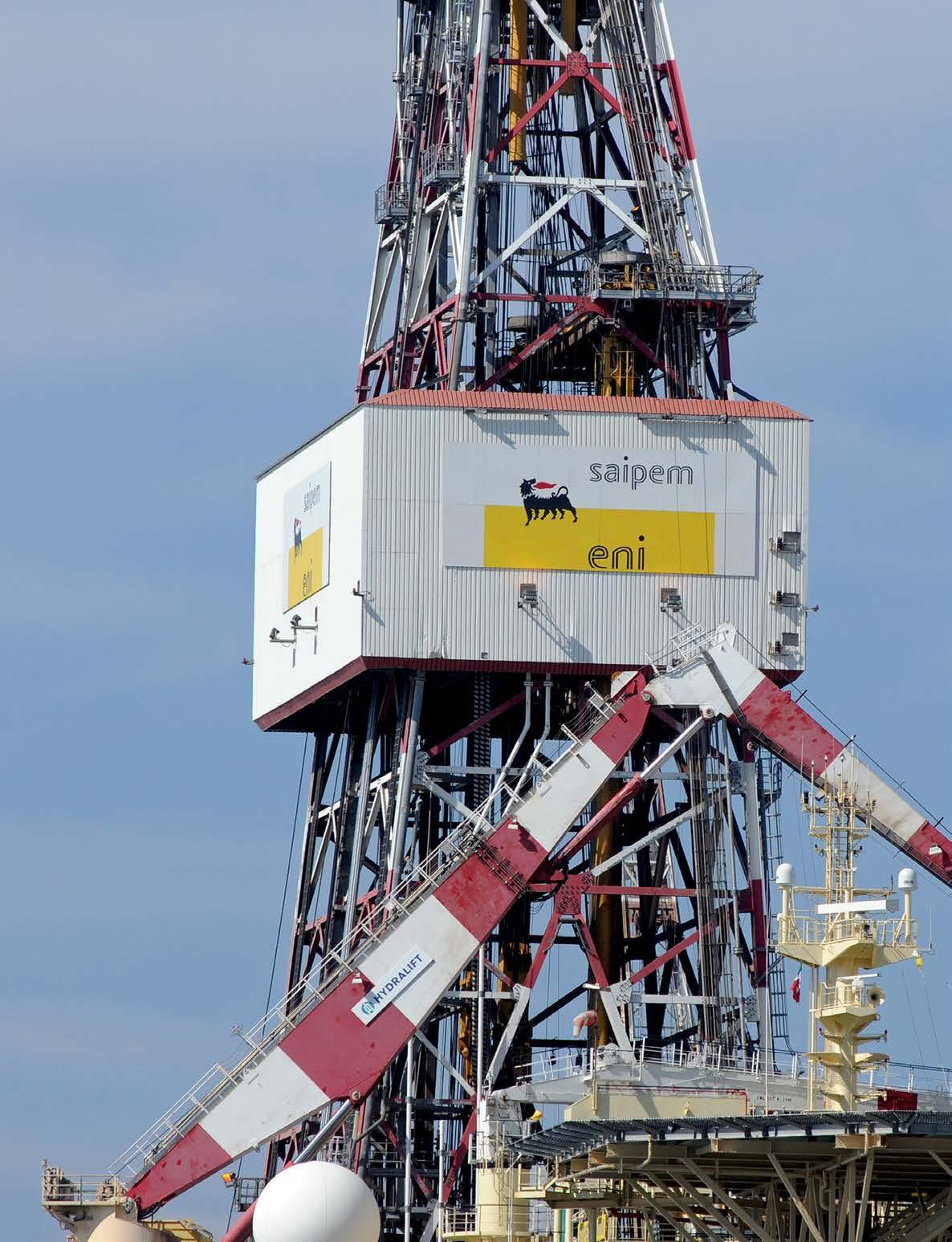


On a mission to deliver engineering operations to build a more sustainable future, Saipem is a leader in the design, construction and operation of a range of complex infrastructures and plant facilities for the energy sector. Saipem is passionate about overcoming engineering challenges to deliver essential solutions that help move its customers’ operations, and the world to a more sustainable future. Therefore, across its operations, technical innovation remains at the forefront, and it is through this that the company can deliver the most efficient and sustainable engineering solutions possible.
Saipem has been in operation since 1957 when the company delivered its first offshore platform as an independent company in Scarabeo. From this very first platform, Saipem exemplified its expertise in construction and engineering, and it is with this foundation that the company continues to develop today. Over the last 65 years, Saipem has only continued to build its portfolio of engineering and construction projects and now has played a vital role in many projects across the globe. Today, Saipem is a global leader in engineering with operations with its business broken down into 6 central business lines. These business lines include drilling, asset-based services, energy carriers, offshore wind, suitable infrastructure, robotics and industrialised solutions. Throughout its portfolio, Saipem works across every stage of project development, taking these operations from process and structural engineering, all the way to procurement and construction. Then, once constructed, Saipem offers maintenance, modification, and daily operations services which help to keep its customers’ projects running smoothly. Beyond the construction and delivery of such projects, Saipem also provides decommissioning services across plants and
platforms when they are no longer in use. By staying so close to every project, Saipem can ensure that it is delivering the maximum economic return of offshore field development whilst maintaining high levels of safety, reliability and performance.
Saipem employs over 30,000 employees spanning more than 50 countries of operation. Across the world, the company’s operations are often split into various region and country-wide divisions, for example in Singapore where Saipem’s operations are run by Saipem Singapore Pte Ltd. Saipem has been operating in Singapore since 1988 providing the company’s essential engineering services across the country and the surrounding region. Here, the company offer a vast array of services and solutions that help its customers in Southeast Asia design, procure, engineer and construct their energy projects.
Projects in Singapore include the expansion of the Singapore LNG (liquified natural gas) Terminal, which spans 40 hectares on the southernmost tip of Jurong Island. The terminal is vital to Singapore’s energy security and has been operating since
Leading Engineering Services

2013. The facility currently covers two jetties, three 180,000m3 storage tanks, and a further 260,000m3 tank. The terminal is currently responsible for close to half of Singapore’s total natural gas demand for power generation and so its expansion remains vital to supporting the country’s energy development. Saipem was awarded the initial construction agreement and has continued to play a vital role


DISCOVER



Best Technology Pte Ltd.

If you work on an FPSO, petrochemical plants, or any offshore or onshore installation where hydrocarbons flow and temperatures soar, you’ve likely seen our solutions in action.
At Best Technology Pte Ltd, we deliver Ancloz Engineering’s highperformance removable jacketing system - trusted for insulation, passivefire protection, and acoustic insulation on ESDVs, piping, valves, and more.
Our jackets are engineered for rapid removal and reinstallation, giving you fast access for maintenance without sacrificing safety.
Tested to withstand jet fires and hydrocarbon pool fires for up to 120 minutes, and certified by Lloyd’s Register, DNV, and ABS, Ancloz jackets protect your people, your plant, and your uptime.
Removable by design, our jackets allow rapid maintenance access - without ever compromising protection. Unlike traditional fireproofing, Ancloz jackets are engineered for fast installation and removal, reducing downtime and maintenance costs.
With over a decade of field-proven experience, we bring world-class solutions to your site - delivered promptly and backed by engineering expertise.
Discover why leading operators trust Ancloz. Contact Best Technology today for a consultation or technical demonstration.
T: +65 6747 5688 E: besttech@besttech.com.sg besttech.com.sg


of energy for Nigeria, it highlights the company’s role as a leader in the global engineering service sector providing the essential design, construction and operations services to support energy developments on an international scale.
Across Saipem’s operations in Singapore, there is a real focus on enhancing the region’s energy sector through its vital engineering services. From its role in the expansion of Singapore LNG to working across the Peninsular Gas Utilisation pipeline development, the company continues to invest in Singapore’s energy sector, whilst expanding its portfolio in delivering innovative, sustainable and reliable energy infrastructures across the globe. With the company’s global portfolio only continuing to grow, we look forward to seeing how Saipem will continue to expand its role across Singapore’s energy sector to help deliver vital energy resources across the country now and for many years to come.


in signing further contracts for the continued expansion of the SLNG Terminal. Saipem’s work on the fourth phase of the project expansion included engineering, procurement and construction
Another key energy development serving Singapore today is the Peninsula Gas Utilisation (PGU), which is located offshore the west coast of the Malaysia Peninsular but serves end users in both Malaysia and Singapore. The pipeline project has undergone many development stages, with Saipem appointed the main contractor in 1991 for Phase III of the development. Phase III was completed by Saipem in 1998, and saw the pipeline extended northwards along Malaysia’s west coast from Meru, Klang to Arau, Perlis. The entire pipeline spans 184km and is focused on delivering natural gas from offshore platforms to customers in Malaysia and Singapore. One of the major feats of the development was the use of PASSO Welding, which is an innovative system that utilises the automatic welding of pipes. Saipem’s role as the main contract for the third phase of the development highlights

in Nigeria. The unit was designed by Saipem and fabricated in the Singapore region, focusing its design on delivering a unit that can produce 210,000 barrels per day (bpd) of oil and 540,000 million standard cubic feet per day (mmscfd) of gas, whilst also delivering significant water and gas reinjection capacities. In addition to its production, it aims to store 2,200,000 barrels of oil. The design and construction of the FPSO included 18 modules that would come together to deliver a topside weight of 31,000 tons. Saipem will continue to oversee the management of the project until the offshore commissioning phase. With Saipem being awarded such a vital contract to help support the delivery


WHEN FIRE STRIKES, SECONDS MATTER
Arm your critical assets with Ancloz Armourflex
removable Passive Fire Protection (PFP)
Certified by DNV, ABS and Lloyd’s Register.
Engineered for rapid deployment.
No tools, no delays.
Rapid access. Zero downtime.
Trusted by the 30+ FPSOs worldwide






BP Indonesia

BP is a leading integrated energy company providing accessible, costeffective and diversified energy solutions across the world. Over the years, BP has expanded its offering from oil to gas, and now into onshore deepwater, and towards the development of new and renewable energy offerings that will help move the world towards a lower carbon energy future. This full range of energy offerings is evident across the Indonesian division of the company, BP Indonesia, where it has been operating for more than 55 years. Across Indonesia, BP is working to expand gas developments across the Ubadari gas field and deliver vital energy resources for the people of Indonesia.
In Indonesia, BP is present across almost every aspect of the gas development pipeline, with operations spanning from mainstream, upstream, downstream, integrated services, trading and even petrochemical sectors. For this reason, BP is one of the largest investors in the country and has delivered vital employment opportunities for local people to work across its various projects spanning Indonesia’s energy sector. However, one of the primary developments for BP in Indonesia is the exploration and production of the Tangguh LNG plant. The plant spans 6 gas fields across the Wiriagar, Berau, and Muturi production sharing contracts in Bintuni Bay in Papua Barat. In this region, the first gas reserves were discovered in the mid-1990s by Atlantic Richfield Co. (ARCO), but today are 100% wholly operated by BP Berau Ltd., BP’s Indonesia subsidiary.
Tangguh LNG operates 3 three liquified natural gas (LNG) trains, which at full capacity can deliver 11.4 million tonnes (Mtpa) of gas per year. In addition to this, the site will have an offshore injection platform, an offshore CO2, and an onshore CO2 removal, processing and compression system.
Since the project began in 2009, Tangguh LNG has delivered more than 1400 LNG cargoes to customers across both Indonesia and Asia. The operations run by BP Berau Ltd work alongside other wholly owned subsidiary companies by BP, including BP Muturi Holdings B.V., BP Wiriagar Ltd., and Wiriagar Overseas Ltd, which gives BP an overarching 40.22% consolidated interest in Tangguh LNG.
However, in recent years, a new development of the BP Tangguh UCC project has been explored, hoping to unlock around 3 trillion cubic feet of additional gas resources for Indonesia. The project developed by BP features Indonesia’s first at-scale enhanced gas recovery through carbon capture, utilisation and storage (CCUS) system. The project is vital as it is located across the Ubadari gas field, which is a rich source of gas development for Indonesia, and so the implementation of an enhanced CCU system will expand Indonesia’s existing energy infrastructure and deliver greater energy potential for the country.
Investing in Indonesia’s Energy Sector


BP Indonesia



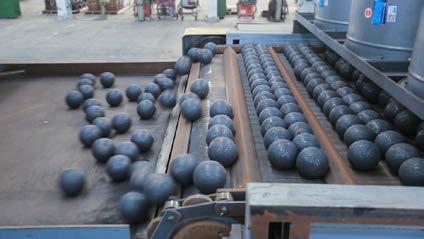




NEED HELP?
Growth is a world leader in design, manufacture & supply of mill lining systems, including grinding media
OUR SOLUTIONS
Let us show you what our team of professionals can do for you and your business.
Growth will always commit to offering the highest quality products, services, and solutions for the comminution of minerals in the mining industry.
www.growthsteel.com au.sales@growthsteel.com +61 (8) 9317 4844
The project is expected to begin in 2028 and will be the first CCUS project to be developed at scale in Indonesia. Plus, the project will have the potential for sequestering around 15 million tonnes of CO2 from Tangguh’s emissions in its final phase. One of the major benefits of the project is that it has also been designated a national strategic project by the Government of Indonesia and represents the continued development of Tangguh for Indonesia’s energy sector. Plus, with the addition of a third LNG train, which began operating in 2023, the plant’s total liquefaction capacity now reaches 11.4 million tonnes per year.
BP announced in November 2024 that the final investment decision (FID) had been reached on the $7 billion Tangguh Ubadari, CCUS, Compression project (CCU) to help Indonesia expand its gas resources and help meet the growing energy demands across Asia. As such a large investment into Indonesia’s energy sector, BP are spearheading the country’s investment in strengthening the country’s energy resources and helping to move towards more renewable energy options across the region.
Murray Auchincloss, CEO of BP, outlined in the press release announcing the FID that “The project not only unlocks a fantastic gas resource, it also represents an Indonesia first through the use of CCUS to maximise gas recovery. BP has operated in Indonesia for more than fifty-five years, and the strength of our relationships enables us to bring deep technical experience in helping to deliver this innovative development.” Auchincloss’ comments highlight the valuable role the project will play in bringing greater energy development for Indonesia and support the country’s continued energy development and diversification.
With the project location in such a strategic place within Indonesia, it is primed to access high-value markets within Indonesia and in the wider region. Therefore, by facilitating the delivery of low-emission energy development, Indonesia is the leading facilitator of such energy demand across the region. Plus, with 99% of the Tangguh LNG project workforce being Indonesians, and 70% of



BP Indonesia

these directly from the Papua province, the project directly benefits the local community not just with energy resources but with vital employment opportunities. The goal of the project is to achieve an 85% Papuan workforce by 2029, which highlights the project and BP’s commitment to continually investing in the region’s people to deliver vital social and economic development.
Across Indonesia, BP plays a crucial role in helping develop the country’s energy infrastructure whilst delivering vital employment opportunities.
The Tangguh LNG project looks set to deliver vital LNG development for the region, which can then be delivered across local markets to enhance Indonesia’s role as a crucial low-emission energyproducing country. With all operations supported by BP’s expertise across the global energy sector, it is no surprise that the project looks set to be a vital development across the Ubadar Gas Field, tapping into such a vital resource to meet energy demands and welcome future investments into Indonesia’s energy sector.
POWERING THE FUTURE WITH SUCCESS
UNLOCKING EFFICIENCY, DRIVING INNOVATION, AND ENHANCING SUSTAINABLE GROWTH WITH BUREAU VERITAS
Bureau Veritas empowers the oil and gas industry with world-class testing, inspection, and certification solutions. From upstream to downstream, we help businesses ensure safety, optimize performance, and meet global compliance standards.
Trust our expertise to enhance operational integrity and sustainability — because your success is built on quality and reliability.

Discover our solutions — scan the QR code and start shaping a world of trust.


As one of the largest shipping companies globally, A.P. Møller –Mærsk (Maersk) provides an integrated transport and logistics service committed to connecting the world to help businesses thrive. For Maersk, the development of companies on an international scale is underpinned by efficient logistics solutions which require expert knowledge and seamless integration into businesses worldwide. With a reliable, efficient and secure logistical network, businesses have the opportunity to move vital cargo to new markets to bring economic development and strategic partnerships for the benefit of trade internationally. Therefore, when businesses, whether large or small, partner with Maersk they are accessing an international network of transport and logistics experts who are committed to getting their customers’ cargo delivered quickly, cost-effectively and securely every time.
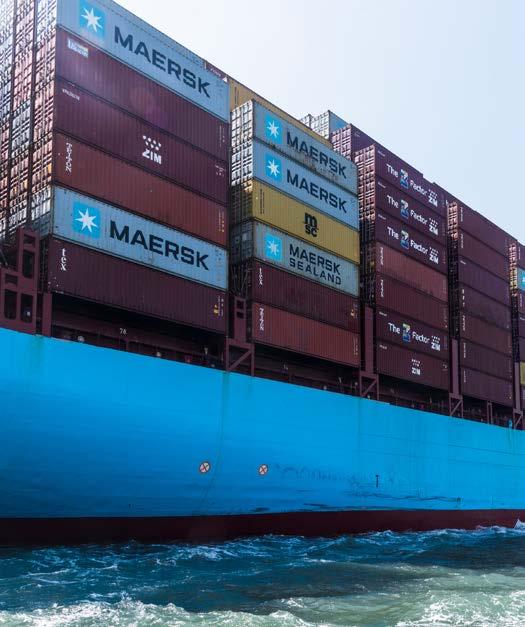
With such a vast logistical footprint, Maersk is committed to delivering more connected, agile, and reliable logistical solutions supported by its international network. Therefore, as global markets continue to evolve, Maersk is a leading shipping company providing greater flexibility and security to its customers, so that they can unlock their potential in international markets. Currently, Maersk has over 100,000 employees across its global operation spanning 130 offices worldwide covering many rich and thriving industries. Across its vast network, Maersk has many vital locations which are developing each region’s logistical sector for the benefit of the businesses that continue to thrive and contribute to their respective economies.
What separates Maersk from its competitors is its commitment to delivering effective transportation solutions no matter the industry, commodity or market. To achieve this Maersk operates one of the largest shipping companies in the world responsible for delivering 12 million containers every year to regions spanning all corners of the globe. Once these vessels reach ports, Maersk then also provides full inland services which move this cargo from major terminals and onto its target markets via roadways, railways and riverways. However, should cargo need urgent transportation or require specific cargo needs, Maersk also operates an air freight division which aims are reduce the cost of urgent and critical cargo requiring air freight delivery.
With such a wide array of logistical offerings, Maersk remains committed to ensuring that every customer can find the right solution for their needs, even if their cargo requires specialist requirements. To achieve this, Maersk works with its teams across the globe to communicate with local suppliers to provide complete and integrated supply chain logistical solutions which cover cargo from the start to the end of its journey. This end-toend logistical service offering is backed by Maersk’s digital solutions system which ensures that its customers can achieve their goals with systems uniquely designed and implemented by its teams. These supply chain solutions also include warehousing to help businesses strengthen their reach with strategically located storage facilities



























from which Maersk ensures the timely delivery of its customers’ goods to its supply chains. It is clear that across Maersk’s operations, the planning, orchestration and management of all transport and logistics services are met with the company’s stellar reputation and industry-leading expertise in the shipping industry to ensure that every single customer can find a logistics solution that works to help them, and their business thrive.
A key country that Maersk services is Papua New Guinea where Maersk is the leading shipping company. For over 10 years, Maersk has provided essential shipping and logistical services to both large and small businesses and customers facilitated by its on-theground teams. These teams work effectively with local supply chain facilitators to ensure that all logistical operations across the country are met with seamlessly integrated transport services throughout every step of the shipment process. Currently, Maersk operates two vessels which run on an 18-day rotation taking cargo from the central hub of Tanjung Pelepas and then calls at ports across Papua New Guinea including Port Moresby, Noro (Solomon Islands), Lae, Madang, and Wewak, as well as feeder services, to ports such as Kimbe and Rabaul.
These services are backed by Maersk’s international network and team of skilled experts in the shipping field, to ensure that businesses in Papua New Guinea can make the most of global
trade. Therefore, as the leading shipping company in Papua New Guinea, Maersk plays a vital role in developing the region’s economy on a global scale by ensuring that businesses can access the services and networks available to many larger international companies. Therefore, the businesses of Papua New Guinea can continue to expand their offerings and enter new markets for their economic benefit, and in turn the reputation of Papua New Guinea in international trade.
To expand its coverage of Papua New Guinea’s shipping industry, Maersk is also working with Inchcape Shipping Services to bring even greater coverage of the country’s ports. By working with another giant in the shipping industry, Maersk can continue to expand its coverage across Papua New Guinea and enable faster transit times from ports across the country and onto international markets. This, in turn, aims to bring further economic benefits for the country and its trade across even more parts of the globe.
As the global company look towards the future, it is working to implement green initiatives and sustainable practices into its shipping services. This was recently highlighted with the arrival of Maersk’s second-largest vessel, the Astrid Maersk which runs on green methanol. The vessel sister to the initial Ane Maersk vessel, arrived in Koper, Slovenia and marks a key step in the company’s mission to achieve net-zero emissions by 2040. Ivić Vodopija, Country Manager for East Adriatic and Central Europe at Maersk, outlined the vital development of the vessels, as “The launch of this class of vessels is a key milestone for Maersk in
Connecting and Simplifying Supply Chains
our journey to decarbonise ocean transportation. Astrid Maersk, together with her sister vessels, embodies our ambitions in the areas of sustainability and innovation”. Vodopija continues that “…this decarbonisation journey requires collaboration from the entire ecosystem including customers, partners, regulators and all other stakeholders and Port of Koper is one of our key partners. We are in this together and today we have visible proof that we can move in the right direction”.
Vodopija’s comments highlight the vital move towards sustainable forms of energy which can be utilised by the ocean transportation industry. As such a key global player in the shipping industry, Maersk’s strive towards net-zero emissions signals to the entire industry that it is possible, and that the future of the logistics industry does have a green future. This is a key area that Maersk will continue
to work on over the coming years as it strives to hit net-zero greenhouse gas emissions by 2040.
As a major player in the world of integrated logistics solutions, Maersk is committed to ensuring that no matter the cargo, it will find a solution to help its customers meet the needs of international trade and achieve recognition in international markets supported by Maersk’s vital logistical solutions. As we have seen in Papua New Guinea, Maersk is committed to ensuring that every region and country is supported by its network of offices and local suppliers to ensure that supply chains run efficiently. However, as the world moves towards a more sustainable future, we look forward to seeing how the milestone of the Astrid Maersk will continue to be replicated across its vessel as it shifts its focus to more sustainable transportation options.



Clarke Energy Australia
Specialising in low-carbon, efficient, and flexible energy systems, Clarke Energy Australia delivers a range of energy solutions, with a focus on ensuring quality products, solutions, and services across a wide variety of sectors. Therefore throughout its operations, Clarke Energy Australia leads the Australian market through its complete engineering, procurement, and construction of its energy solutions. As a subsidiary of the global Clarke Energy company, Clarke Energy Australia is a leading provider of power generation and storage solutions across Australia, New Zealand and Papa New Guinea. Throughout every aspect of its operations, whether on a global or regional scale, Clarke Energy is committed to safety, quality, and the environment as it continues to serve its customers with quality products.
Clarke Energy began its operations in 1989 and has worked over the years to now be a world-leading company in the design, installation and long-term maintenance of gas and diesel engines for power generation applications. From this substantial base, Clarke Energy opened its Australian division in 2001 with its first premises in Adelaide which today is the head office for the whole of the global company’s South Pacific regions. Since 2001, the South Pacific region has grown expansively, and it is now an award-winning specialist in gas-fuelled technology with a whole range of engineering, project management, sales, service, ports, and administration personnel ready and waiting to serve its customers every need.


Clarke Energy Australia provides complete engineering, construction, and procurement (EPC) services to suit the supply and maintenance of gas engines or other power generation systems to help make its customers’ energy projects a reality. In engineering, it creates computer-aided designs and provides mechanical and electrical engineering to make these a reality through installation. For installation, Clarke Energy Australia has dedicated teams which help to bring these designs to life with their top-quality project management, installation, and commissioning of the entire energy solution. Once the company has designed and implemented a range of energy solutions it continues to add value to its business through the installation and maintenance of the system all under one company.
Clarke Energy Australia’s supply can range from the sale of a single engine, a completed combined heat and power plant, to a fully engineered power plant, as well as the integration of other power generation and hybrid or microgrid solutions. The vast array of solutions that Clarke Energy Australia offers all under a single company allows them to follow every project from concept to its implementation and maintenance to ensure that customers are receiving solutions which are best suited to their needs. Then, all of the EPC will be completed by the company which boasts over two decades of expertise in the field, and a whole host of substantial projects behind them. Clarke Energy is a part of KOHLER Energy, which means that throughout its energy systems, the
Energy Solutions for Every Situation

company can deliver a range of KOHLER’s gas engines, biogas upgraders, battery energy storage systems, carbon dioxide captures and heat pumps. However, Clarke Energy Australia is also the largest and sole authorized distributor and service partner for INNIO Jenbacher gas engines in Australia, which along with the KOHLER systems, has established the company as a key player in energy solutions providing top-quality engines.
Already within its portfolio are many turnkey power stations in remote areas, and now it has over 20 years of experience across such a vast array of applications and conditions that for energy solutions, Clarke Energy Australia is the leading choice to meet and exceed its customers’ needs. This has been seen with Clarke Energy Australia undertaking a range of energy solutions across the mining, oil, and gas industries to deliver efficient, low-carbon energy solutions that are uniquely suited to the needs and conditions of its customers.
Clarke Energy Australia provides gas engine fuel sources to the mining sector which can accept a variety of fuels including natural gas, coal bed methane, coal steam gas, liquified natural gas (LNG), diesel and crude oil. These allow mining facilities to remain resilient and functional whilst
improving efficiency which in turn hopes to reduce carbon dioxide emissions. Then for the oil and gas sector, Clarke Energy Australia engineers, installs, and maintains a range of solutions for oil and gas wells, hydrocarbon separation plants, drilling rigs, gas compression plants, dehydration stations, and oil treatment plants.
In recent news, Mineral Resources Limited (MinRes) has chosen Clarke Energy Australia as its preferred partner for a second project. The two companies reached an agreement on a new 26.9-megawatt (MW) power station for MinRes’ Onslow Iron Project. The work will take place in Ken’s Bone Mine which is planned to produce roughly 35 million tonnes of iron ore per year. The mine is expected to commence operations in June 2024, and Clarke Energy Australia will design and supply mine and process-related infrastructure. This will enable the processed ore from the mine to be hauled by private road to Onslow, where port operations will transfer the product to transhipment vessels destined for international markets.
Clarke Energy Australia



Experts in Industrial Electrics





Therefore, the contract will see Clarke Energy complete a ‘power wrap’ of the Ken Bone Mine and port which will feature tailored solutions at both ends of the operations. 9 Jenbacher J420s will supply the highly variable load of the Onslow port operations whilst 8 J620s will power the comparatively high load transients of mining operations 150km inland. One of the key aspects of Clarke Energy Australia’s operations is ensuring that its solutions are futureproofed for hydrogen. All of the Jenbacher Series 6 engines can operate on up to 25% blended H2/ CH4 without the need for retrofits or special orders. Furthermore, from 2025 direct injection options will be available through Clarke Energy Australia which will achieve 100% H2 operations to help move industries towards a future of decarbonisation in and across supply chains.
Clarke Energy Main Board Director and Australasia Managing Director Greg Columbus commented in the MinRes and Clarke Energy Australia press release announcing the partnership that “From our humble beginning in Australia 25 years ago it is very pleasing to see growing recognition amongst WA Tier 1 miners and energy producers for the Jenbacher 6 Series generator and the exceptional quality of our design and builds in remote, islanded applications”. Greg Columbus highlights the expansive and widely recognised role that Clarke Energy Australia plays across the industry as it continues to build on its portfolio of projects across the mining, oil, and gas industries.
Overall, Clarke Energy Australia is an all-inone engineering, procurement and construction company that provides pivotal energy frameworks and solutions to help establish reliable energy infrastructure that suits and supports its customers for now and in the future. As Clarke Energy Australia continues to develop its implementation of engines that are future-proofed, it looks set to grow expansively as the company moves both its customers and its operations towards a future of decarbonisation – an essential move for the mining, oil and gas industries which so often use natural resources. Therefore, throughout Clarke Energy Australia’s systems and solutions, it is providing efficient solutions which are actively working to help its customers’ projects and move the energy industry towards a world of reduced carbon emissions.



Over the last 100 years, Komatsu Mining Corp. has continued to invest in its equipment solutions and services which has established it as a leading manufacturer of machinery for the construction, mining, forestry, and industrial equipment sectors. Across the company’s portfolio of equipment and machinery, Komatsu’s products are designed to deliver value, thanks to its implementation of innovative technologies to take its equipment into the future. Therefore, Komatsu aims to create value throughout its operations, which will bring continued economic benefits for its customers and empower industries worldwide to develop towards a more sustainable future.
Komatsu was founded in 1921 with the goal of providing those in the local community with employment opportunities following the closure of a local copper mine. This passion for supporting people in the local community provided the vital foundation from which the company we know today could form. Having built from a small operation in Japan, Komatsu today is now a multinational corporation which manufactures equipment and machinery across a wide variety of industries.
However, this passion for supporting people can still be seen throughout every product it manufactures as each one is designed with innovation to deliver top results for its network of customers. Its customers are working on some of the most complex projects across the world which are delivering essential infrastructural changes for the betterment of people and the planet.
A key sector for Komatsu’s operations is the construction industry, where Komatsu has developed a range of equipment which champions performance, quality, and reliability. Komatsu’s equipment offerings to the construction industry cover things such as dozers, excavators, motor graders, trucks, and wheel loaders. However, what sets Komatsu’s construction equipment apart from its competitors is its inbuilt smart technologies available across its range of equipment, which are designed to help customers deliver projects with speed, safety, and cost-efficiency as a priority.
To help Komatsu deliver excellent equipment offerings supported by the latest technology to the construction industry, it announced in December 2023 the acquisition of iVolve Holdings Pty Ltd. iVolve is an Australian-based technology company

Mining Equipment for the Future

that provides top-of-the-range fleet management solutions perfect for equipment within the midtier quarry, mining, and construction industries. Komatsu looks to adopt these technologies into its equipment to allow its customers to have greater control over its fleet on the job site to increase productivity and heighten safety concerns.

Komatsu already has a range of smart construction technologies with iVolve which have been implanted throughout some of its equipment. These include its Smart Quarry Site Technology which utilises pre-shift inspection to allow managers to identify issues across its fleet of mobile equipment to provide a detailed view of the health and status of each machine’s performance. This system helps managers to make the most of equipment and reduce downtime. Therefore, with the new acquisition of iVolve, Komatsu can continue to implement these fleet management technologies across its construction equipment, and its entire product line offering to provide greater transparency and management of fleets across complex construction sites.
Mike Gidaspow, Vice President for Products, Service and Solution for Komatsu in North America highlighted in the press release that “iVolve have been great collaborators and this acquisition offers exciting potential to further our world together”. Gidaspow’s comments focus on Komatsu’s overall mission to deliver products that will provide essential services to help world-developing
Komatsu
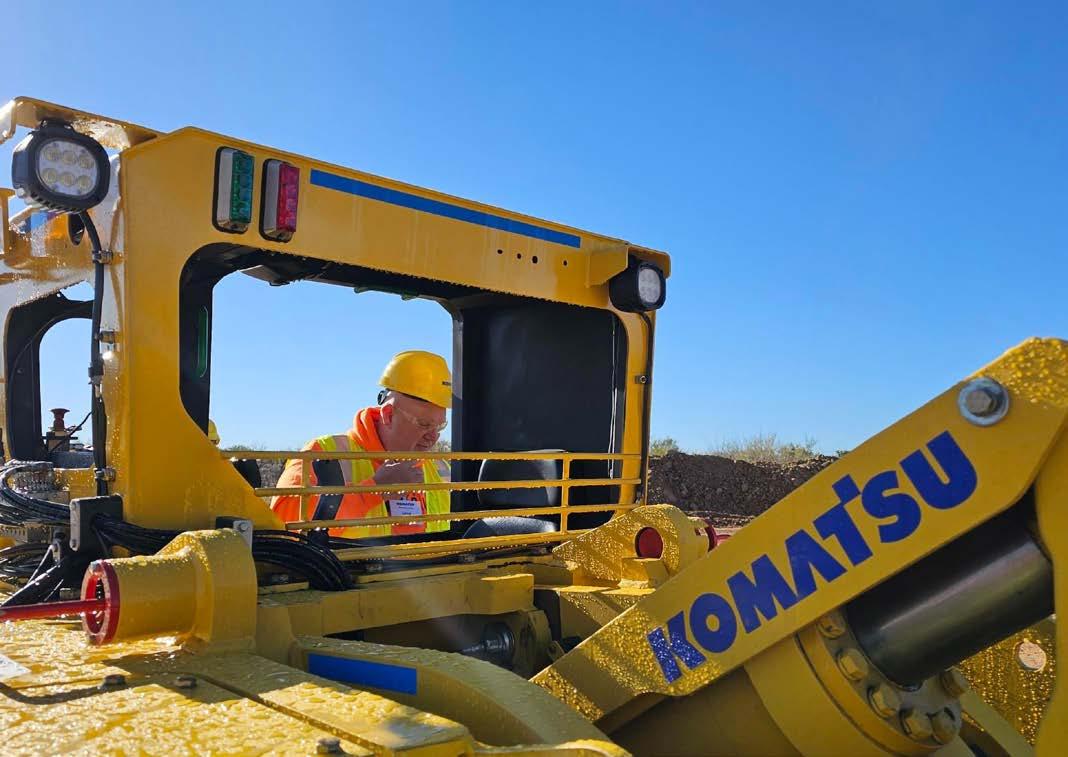

STEELCAST LIMITED
Regd. Office & Works: Ruvapari Road, Bhavnagar, Gujarat, India 364 005
Phone: +91-278-251 9062,
Fax: +91-278-242 0589, 251 9831
E-mail: pns@steelcast.net, Website: www.steelcast.net

In Service to Komatsu Group of Companies

Steelcast Limited thanks
Komatsu Germany GmbH
Komatsu America Corp., USA
Komatsu Limited, Japan
Komatsu Mining Corp., India
Komatsu Mining Corp., USA
Hensley Industries Inc., USA
We are a leading steel foundry in India, boasting an annual production capacity of 29,000 tons of steel and alloy steel castings. Our facilities include in-house CNC machining, along with comprehensive manufacturing and testing capabilities such as Heat Treatment, Induction Hardening, and NDT. We cater to various industries including Construction, Mining, Earthmoving, Locomotives, Steel, Cement, GET, and Railroad sectors.
RECOGNITIONS
• ISO 9001-2015, ISO 14001-2015 & ISO 45001-2018 certification by TUV NORD, Germany. • EN 9100-2018 certification for Aerospace by TUV NORD, Germany • Accreditation by Association of American Rail Road (AAR)
projects remain on track. The iVolve system is planned to be rolled out across Komatsu’s offerings across North America.
One of the most vital industries that Komatsu serves is the mining industry, as its role in global development cannot be understated. The mining industry has seen increasing demands over the last few decades as metals and minerals have taken on a new role in moving the industry towards the future. We have seen this with the use of metals such as lithium used in lithium-ion batteries which is driving the electric vehicle market. Therefore, Komatsu is focused on delivering products which make mining operations run more smoothly for the betterment of the future, and so offers a wide range of operations across both the underground and surface mining sectors.
Komatsu is the leading provider of electric and hybrid rope shovels, walking draglines, automation solutions and connected mining technologies for the surface mining sector. In the underground mining sector, it has a range of shaft sinking equipment, underground rock bolters, underground hard rock drills and underground hard rock bolters. With every piece of mining equipment offered by Komatsu, customers gain access to Komatsu’s team of experts across its global network of dealers who
Mining Equipment for the Future

are always on hand to help customers choose the right bit of equipment for a job and then remain in contact to ensure each one continues to deliver results for its customers.
With the ever-evolving nature of mining, and as demand continues to soar, Komatsu is committed to providing equipment that continues to meet the current demand of the mine site. Therefore, in February Komatsu introduced the WX11 LHD into the underground hard rock lineup, which offers the best-in-class breakout force and payload. The 11-tonne machine is designed to boost productivity whilst providing lower costs for its customers. Ryan Karns, Director of LHD and Truck Products at Komatsu, highlighted in the press release that “The WX11 is a game changer for hard rock miners. Developed through a close partnership between our experienced team and our longtime customers, this product reflects a shared commitment to design excellence”. Karns comments highlight the founding passion behind Komatsu again, that every bit of equipment is designed for the benefit of its customers as helping them achieve success brings greater success for the world.
The WX11 exemplifies Komatsu’s commitment to providing mining equipment that can be integrated into the next generation of mining capabilities. The
WX11 joins the introduction of the GD955-7 Motor Grader just a month before. The GD955-7 offers operators all the control and precision they need to build and maintain haul roads for truck fleets of 100 tons and up. The machine provides powerful horsepower and exceptional blade downforce pressure to make grading so much easier. We can see with both of these offerings Komatsu remains committed to providing innovative equipment and technologies to reduce overall machine maintenance and keep costs at a minimum, all whilst driving powerful operations to make even the most complicated of jobs a reality.
Every time we cover Komatsu, we are reminded why it is a key player in the machine and equipment manufacturing sector on a global scale. Throughout every new product offering, Komatsu is committed to helping its customers achieve their project success which in turn will develop the world towards a better future. We look forward to seeing what new project offerings Komatsu will develop over the coming years as it continues to meet the growing demands across the mining, construction, forestry, and industrial sectors.


Caterpillar Inc.
The Caterpillar Inc., brand is one you will be very familiar with if you’ve ever stepped foot onto a construction or mine site. With its iconic yellow branding and ‘Cat’ logo, Caterpillar is a world-leading manufacturer of construction and mining equipment, off-highway diesel, and natural gas engines, as well as industrial gas turbines and diesel-electric locomotives. With almost 100 years of experience behind its operations, Caterpillar is committed to delivering innovative products and services across its global network that are shaping the future of the mining and construction industries.

When you buy a product from Caterpillar you are buying top-quality machinery, which is backed by industry experts who are focused on ensuring that its customers get the most out of every bit of equipment they purchase. To achieve this, Caterpillar believes in bringing together the right people, products, technologies, and services needed to provide solutions which meet the needs of every project. The reputation of Caterpillar’s machinery and equipment speaks for itself, with business operations now spanning every continent on the globe and in sectors such as construction, mining, energy, and transportation.
With every development for Caterpillar, its operational efficacy, cost, reliability, and work site safety are of paramount importance. We see this in the Mining sector, where Caterpillar has its Cat® product line for surface mining which spans the drilling, digging, loading, hauling and maintenance of mine sites to ensure efficiency. When buying one of its vast collection of heavy-duty mining equipment, whether it be a large wheel loader, dozer, motor grader or truck, customers can be sure that every machine has been developed with performance in mind. To achieve this, Caterpillar offers Cat MineStar™ Solutions with its mining equipment, which provides the industry’s most comprehensive and thoroughly integrated suite of technology offerings.
Cat MineStar™ Solutions ensures that customers can have optimized control over fleet management, whilst getting real-time feedback on the health of their machinery. This solution is aimed at improving operations and maintenance of these heavy pieces of equipment so that Caterpillar can continue to deliver results of value for its customers. The MineStar solution is available across its drilling, loading, hauling, dozing, and grading machinery and is aimed at enhancing the efficiency of its mining equipment to make mining operations more productive for its customers.
However, as Caterpillar moves towards the future it is increasing its product offering to meet the mine sites of the future. In May 2023, Caterpillar introduced the Cat® D10 Dozer which is designed to be more productive, efficient and durable to meet the harsh conditions of the mine site. The D10 features industry-leading technology, which reduces the fuel burnt, and increases the productivity and uptime of the machine. With a stator clutch torque converter and load-sensing hydraulics, the D10 is designed to be more efficient than previous models and provide










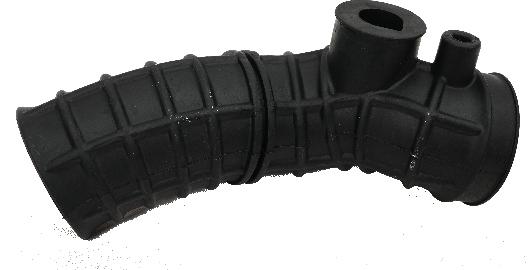
Caterpillar Inc.

a longer component life with reduced oil changes and reduce the need for maintenance and repair costs.
By significantly reducing cycle times thanks to the focus on maximising material moved per litre of fuel, the D10 has been designed for the future but is ready to integrate into customer’s projects tomorrow. Consequently, the D10 highlights the focus by Caterpillar to make machinery which provides optimum efficiency for its customers now, whilst integrating technologies which will allow the dozer to have a prominent role in the future of mines.
Much like the mining industry, the world of construction is just as challenging, but now with more project restraints, schedules, and heightened safety concerns. Therefore, Caterpillar has developed a range of industry-leading construction equipment which is designed to handle the challenging confines of construction projects and deliver efficient productivity for its customers. Machines spanning Caterpillar’s construction range include excavators, mini excavators, dozers, wheel loaders, skid steer and compact track loaders, backhoe loaders, telehandlers, articulated trucks, and motor graders – to name just a few!
With every purchase of construction machinery from Caterpillar, customers can take advantage of its Global Dealer Network which supports them throughout their projects. The network provides customers with access to partners, services, and guidance from a team of construction industry experts. Therefore, when customers buy from Caterpillar, the machines do not lose their value as the network works to maintain the efficiency, health, and productivity of the equipment for its entire operational life.
What separates Caterpillar’s equipment from its rivals is its Cat® Command Remote Control Technologies which provides the construction industry with equipment that can be remotely controlled without the need for the machine operator on site. The Command Remote Control Technologies is reshaping construction projects for the future, but removing the need for operators which improves operational safety whilst reducing downtown which drives bottom-line benefits for the customer.
For Caterpillar, its Command Remote Control Technology is pushing the future of autonomy into the construction industry. The automation technology began almost two years ago following
the acquisition of Marble Robotics of San Francisco. Marble Robotics had developed a range of small delivery robots for use in dynamic environments, and so Caterpillar adopted this technology and infused it with the rugged durability of its Cat Construction range to deliver construction equipment that is equipped with completely remote systems for greater site automation. This development allows Caterpillar to jumpstart its lightweight and costeffective autonomous equipment range, which has allowed it to remain ahead of its competitors.
Using Caterpillar’s Command Remote Control Technology, customers can operate up to 5 machines at once, with machines able to deliver precision operations. To achieve this all operators need to do is assign the machine to a drop point, which the machine will then navigate to alone. Once jobs are completed the machines leave the material and then navigate back to the pickup area where the operator can then take back control. This allows for multiple points of development to take place at once, as the operator does not physically need to be with the machine for it to operate. This
Optimized Equipment Solutions
reduces downtime and increases efficiency, whilst removing the opportunity for safety risks across the construction site.
For Caterpillar, it aims to deliver machinery and equipment which delivers results for its customers. This is something we can see throughout every piece of equipment produced, and every new technology introduced. With a network of dealers behind its products to ensure that customer satisfaction and machine health are guaranteed, Caterpillar has established a world-renowned reputation for reliable machinery which can be seen across mine and construction sites all over the globe. However, it is with this reputation that Caterpillar is striving towards the future, to adopt new and innovative technology to enhance performance and reduce environmental impacts. With this in mind, Caterpillar is focused on making equipment that will be seen across the future of the mining and construction industries, however, it is implementing these technologies now for the benefit of its customer’s projects today.



Malaysian Photovoltaic Industry Association (MPIA)
The solar industry has seen a vast uptake of solar photovoltaic (PV) systems across the globe in recent years to help reduce environmental impacts and increase the number of houses and businesses to facilitate their daily functions via renewable energy. In Malaysia specifically, the last 20 years have seen the development of the solar PV industry spearheaded by the Malaysian Photovoltaic Industry Association (MPIA). MPIA’s role engages with the energy ministry, regulators, and authorities to champion the development of the solar PV industry and expand its operations for a more sustainable future.
In 2006, the Malaysia Building Integrated Photovoltaic (MBIPV) Project, made up of the United National Development Program (UNDP) and the Ministry of Energy, Water and Communication (KTAK), funded a seed grant which established MPIA. The project was crucial to driving both energy efficient and renewable energy initiatives, with the mission to reform and democratize the electricity supply industry in every aspect from generation to transmission and distribution. MPIA’s operations work with key governmental figures to make solar PV prices competitive, reliable, and sustainable to ensure their efficiency as an energy source for the country. It is MPIA’s main vision to create a climate of renewable energy availability, where everyone can reliably generate their electricity via solar PV systems to remove reliance on fossil fuels and reduce the daily running cost of electricity for people across Malaysia.
To achieve this mission, MPIA brings together key players across Malaysia’s photovoltaic industry to promote the distribution, education, and regulation of the industry. When the Association began in 2006 there were only 45 members under MPIA, however, today there are close to 200 active members which highlights the current push towards the application of solar PV systems already evident across the country. This is confirmed by the approval of more than 350MW of solar PV projects implemented by SEDA under the Net Energy Metering (NEM) programme in 2020. This covers more than 400 completed new installations by the end of 2020. This positive growth of the industry is

also reflected in the large-scale solar (LLS) program which since 2016 has accumulated more than 850MW in operational capacity.
One of the central focuses of MPIA is education, as the Association hopes that through education it can help successfully achieve Malaysia’s national target of 40% renewable energy capacity by 2040, with the goal of increasing this to 70% by 2050. To achieve this, MPIA has developed its Solar Roadshow 2024, which is hoping to make these governmentally established targets a reality through education and networking. The roadshow focuses on sharing knowledge to help better spread awareness and necessary development into grid readiness, how to enable the energy transition, and discussing the future of electric vehicles in the motoring landscape.
The roadshow will stop at cities all over Malaysia to share the work of MPIA and bring into conversation the role of solar PV moving forward. It is hoped that through the workshops, which will feature speakers from governmental organisations to big organisations, such as the Green Technology and Climate Change Corporation (MGTC), the Association will bring greater awareness to the solar PV market and its member companies. The goal is to bring economic development for the country and MPIA members, whilst pushing the country towards a necessary energy transition.
A Voice for the Malaysian Solar Industry
In January this year, the work of MPIA was highlighted with the signing of a Memorandum of Collaboration with Bursa Carbon Exchange (BCX), to establish awareness of the Renewable Energy Certificates (RECs) market all whilst educating project developers on how to monetise it through BCX. This will mark the first collaboration between the two organisations, and through the MPIA Solar Roadshow 2024, MPIA and BCX hope to create a more transparent market for RECs in Malaysia.
Overall, MPIA has spent the last 20 years developing the solar PV market in Malaysia by promoting its members and education surrounding the renewable energy industry to encourage greater uptake of solar PV systems. For MPIA, development throughout its members continues to bring vital investment into Malaysia and in turn, continues to push the country towards a greater application of renewable energy supported by reliable energy infrastructure for future-proof energy generation. Therefore, through the Association’s focus on education and collaboration, MPIA looks set on easily achieving its renewable energy targets whilst establishing Malaysia as a hub for solar PV development.




As the energy demand continues to soar across the globe, companies such as SBM Offshore are working to create new and innovative solutions which hope to make energy more accessible. However, SBM Offshore is doing this by harnessing the ocean to move the world towards a future of renewable energy. SBM Offshore utilises its vast expertise across the sector to bring energy to some of the world’s biggest cities whilst constantly working to protect to planet and its people.
To achieve carbon neutrality across the energy sector, SBM Offshore uses its technological expertise to design, build, install, and operate offshore floating facilities across the worldwide energy industry. According to SBM Offshore, twothirds of the world’s cities are located near a shoreline, therefore the need for energy solutions on coasts has the potential to bring significant local prosperity. However, a key focus for SBM Offshore is harnessing the natural power of the ocean to bring energy to local communities whilst not putting these communities or the environment at significant risk. This attention to protection and energy infrastructure building is what positions SBM Offshore as such a significant player in the future of energy development.

SBM Offshore specialises in a range of offshore deepwater solutions including floating production storage and offloading (FPSO), oil and gas production operations and installation services, offloading terminals, TMS LNG, wave converters and floating offshore wind terminals. It has positioned itself at the top end of the FPSO market and deals with some of the largest and most complex projects in the sector. SBM Offshore focuses on using innovation to deliver high-performance solutions which always aim to meet and exceed its client’s expectations, often going beyond what is available across the market. Its deepwater systems work to tackle unique sets of engineering challenges and make energy infrastructure possible through its comprehensive research and development teams.
A key pioneering strategy of SBM Offshore’s operations is its Fast4Ward program which includes its Multi-Purpose Floater (MPF). The MPF is a generic hull which can accommodate an internal turret, external turret, or spread-mooring solution to facilitate topsides for increased production capacity. The Fast4Ward program has been designed to transform its operations by reducing the cycle time to energy delivery by de-risking projects and improving the quality and safety of its solutions. Therefore, the resulting energy solutions produced by SBM Offshore are paving the way towards future generations of FPSOs across the energy sector.
The Fast4Ward program hopes to add value to its clients’ operations by improving the economics of their deep-water projects which in turn will lower break-evens. To achieve this, SBM Offshore has leveraged its experience by standardising its designs to improve execution of multiple projects which has knock-on benefits across the deepwater

Connecting the future: Cables International leads the global market through innovative cable management
Becoming the world’s leading supplier of specialty cables for the marine and offshore sectors is no mean feat. Yet with more than 50 years of experience, research, and innovation behind them, Cables International have firmly established themselves as global market leaders. Their history, however, is only part of the story. Today, the company’s exceptional range of partnerships has allowed Cables International to continue building momentum: a steadfast customer-centric focus provides a continuous impetus to pioneer new, creative solutions.
One such partnership, namely with the Prysmian Group, has resulted in Cables International’s marketleading offering of offshore cables.




Required to deliver reliability and quality results in the harshest environments, these cable solutions provide high-performance power, instrumentation and control systems. Offshore oil and gas locations all around the world are served from Cables International’s distribution centers in Singapore, Malaysia, China, Australia and Dubai.
Meanwhile, Cables International’s extensive range of cable cleats from industry leaders Ellis Patents has been designed specifically to meet the gruelling needs of the energy sector.

As a matter of course, the design is driven by safety, and the products are measured against stringent quality standards. Designed for heavy-duty use, they can be relied upon consistently in the most testing environments.
While safety and longevity are at the core of Cables International’s entire product offering, these design pillars also support one of their core values – sustainability. The first industrial company in Southeast Asia to achieve carbon neutrality, they are strongly committed to maintaining an environmental focus throughout their business and supporting their customers in their own sustainability goals.


Sustainability, in fact, forms a key part of Cables International’s strategic partnership with SBM Offshore, a global frontrunner in the supply and installation of Floating Production, Storage and Offloading (FPSO) vessels and a pioneer in developing a sustainable and affordable energy source from the world’s oceans. Significant collaborations to date include the supply and installation of cables for the FPSO Almirante Tamandaré, Mero 4 and FPSO One Guyana.
These products provide enhanced protection against the intense forces associated with short circuits, pulling and slamming that are often found in industrial environments. Manufactured from superior metallic and composite materials, the components have international industryappropriate certifications, making them a vital addition to any high-risk, high-load energy installation.
Similarly, through working closely with cable specialists Tecnikabel and APS Finland, Cables International’s portfolio of telecommunications cables now satisfies the widest range of customer requirements and meets or exceeds the strictest international standards. Reliable and longlasting performance is thus a given no matter the conditions.


In addition to offshore cabling solutions and cable cleats, Cables International also provides plugs and sockets, an offering that the company has diversified and honed with expert support from partner Marechal Electric.



A crucial factor in making the collaboration run smoothly has been Cables International’s flagship program, Cable Management Solutions. This service guarantees that a customer’s cables and wiring are carefully devised, exactingly installed, and meticulously overseen, ensuring that every system works at maximum efficiency from day one. The company’s team of experts offers support with every aspect of design, engineering, procurement, installation, and ongoing maintenance for all kinds of cable management systems, providing regular and detailed communication with customers throughout the entire process.
Through their continued focus on developing productive partnerships and anticipating customers’ needs, Cables International have earned their place at the head of the cable industry. With so many changes, developments, and innovations happening throughout the sector, however, they refuse to leave space for complacency. Look out for more exciting news from Cables International in the coming year. www.cablesinternational.com














SBM Offshore
solution industry due to their repeatability. In addition to this, SBM Offshore has worked to seamlessly incorporate digital solutions into its offshore solutions, which allows its models to constantly improve their performance whilst also remaining continually optimized for the specific needs of its client’s operations. At present, SBM Offshore has completed the construction of two Fast4Ward hulls with more planned in the future.
In addition to this, SBM Offshore has its Ocean Infrastructure program which delivers value platforms that are safe and sustainable, whilst also creating a more affordable energy solution. This includes a fleet which has been made increasingly efficient by SBM Offshore to lower the carbon footprint of its solutions and produce a leading uptime and safety track record. Therefore, SBM Offshore leads the market with its leased FPS solutions and currently has multiple units in operation across the globe which continue to provide the company with a unique breadth of operations experience across the energy sector.
However, everything that SBM Offshore does is framed by climate change mitigation which can be seen throughout its operations with its strong commitments to net-zero by building facilities and infrastructure in a carbon-reduced way. A key way SBM Offshore does this is through its emissionZERO program which aims, as the name suggests, to

achieve near-zero emissions from its operations. To do this SBM Offshore has set targets in line with the net-zero emission of its key stakeholders and continues to develop products in an emissionreducing way. This is seen in its continued product developments which not only provide a platform for stakeholder engagement but uses the development of its FPSOs to show the energy industry what is possible when strict emission targets are put into place across such a global company. Its Fast4Ward programs are the foundation of this for SBM Offshore.
Furthermore, SBM Offshore remains committed to these carbon-neutral goals through its 3 key strategy pillars of environment, social and governance. As we have seen, in terms of the environment, SBM Offshore is continually investing in energy-efficient technologies whilst also working to bring environmentally friendly solutions to a global market. In addition, the company continues to work closely with its suppliers to encourage innovation and ensure that sustainable solutions encompass its supply chains at every level. We see this in its zero-emission solution for hydrocarbon production which, as the company moves towards the future, is hoped to continue to create value for all of its stakeholders as it leads the market with carbon-zero energy solutions.
Additionally, SBM Offshore fosters a safe and inclusive environment where the people are at the heart of its every function. The company aims to inspire and empower people by focusing on strict guidelines on workplace health, safety and security, community relations, human rights, diversity, and inclusion. It is this keen focus on its people that has earned SBM Offshore global recognition as a responsible corporate citizen. In turn, those who choose to use SMB Offshore as their energy solutions provider, know they are working with a company that has a reliable reputation as a reliable and supportive partner across international markets.
Throughout SBM Offshore there is a strong commitment to achieving high operation performance which focuses on a value-based approach. This approach prioritizes strong leadership, clear decision-making processes, effective communication between management and stakeholders, as well as strong ethics and

SBM Offshore
compliance. All of these factors are part of the company’s ongoing commitment to continuous improvement which helps it achieve operational excellence and consistently high-quality solutions. As the company moves towards the future, it has continued to incorporate digitalization into its operations and governance to help it remain ahead of the curve. However, what remains the same about SBM Offshore is its central values of integrity, care, entrepreneurship, and ownership which can be seen throughout every single aspect of its operations.
As SBM Offshore looks towards the future its key focus is on its new-build FPSOs with oil production volumes of up to 250,000 barrels per day which previously was the focus of the Fast4Ward FPSO. The large conversion FPSO with an oil production volume of up to 150,00 barrels per day will rival traditional FPSO markets as it continues to convert oil tankers to FPSOs. Furthermore, SBM Offshore will continue to take a selective approach to market opportunities
with a key focus on the main FPSO markets in Brazil and Guyana where the majority of low breakeven oil-price prospects are concentrated. In addition, SBM Offshore continues to develop its business across the globe which hopes to see up to 35 FPSO projects reach a Final Investment Decision (FID) between 2021 and 2023.
Overall, SBM Offshore continues to strive to keep pushing the boundaries across the energy sector to produce solutions which respect the planet whilst also bringing essential energy infrastructure to coasts across the globe. What separated SMB Offshore from its competitors is it commitment to sharing its experience with the industry to continually deliver safe, sustainable, and affordable energy solutions from the oceans which can provide essential energy for many generations to come. We look forward to seeing how SBM Offshore continues to develop the offshore energy industry and continues to show the industry how crucial sustainability is in the energy sector.


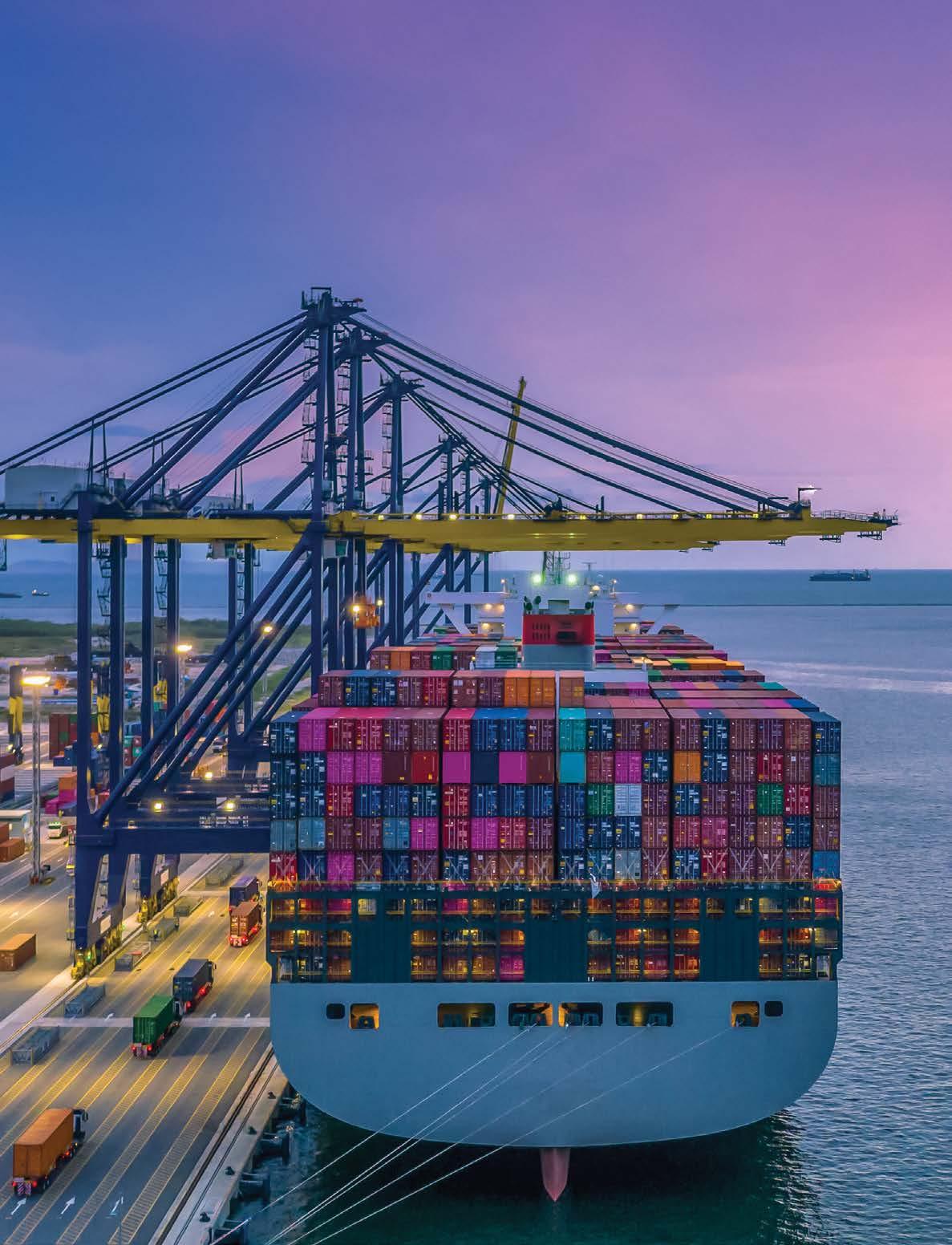

Operating the world’s largest transhipment hub, PSA Singapore provides unrivalled connectivity in the heart of Southeast Asia. PSA Singapore is a world-leading ports and terminals group which handled 37 million twenty-foot equivalent units (TEU) of containers in 2022. Therefore, as the flagship terminal of PSA International, PSA Singapore leads the industry across the region providing handling, management, depot, and warehousing services to a whole range of container vessels.
PSA Singapore began as the Port of Singapore Authority, which was a statutory board responsible for regulating, operating, and promoting the Port of Singapore in the 1960s. However, in the 1970s its container port and handling facilities were established which over the next few decades saw expansive growth reaching 5 million TEU by 1990. By this point, Singapore was the largest container port in the world, and so in 1996, the regulatory functions of the original company were transferred to Singapore’s new maritime regulator, the Maritime and Port Authority of Singapore (MPA). In 1997, the Port of Singapore Authority converted into an independent commercial company which kept the PSA initials and added Singapore removing the original acronym meaning. Since the container port and handling services began as the central focus for PSA Singapore, it has continued to expand and play a vital role in the overarching multinational PSA International group.
The core business of PSA Singapore is the movement of cargo from one vessel to another whilst in transit to its destination. This vital role is due to its strategic location at the heart of

SUPERCHARGE YOUR SUPPLY CHAIN EFFICIENCY
Following DHL Supply Chain’s investment of EUR350 million in Southeast Asia, find out more about how DHL in Singapore is unlocking the future of logistics for our customers.
As the leader in green logistics, we are committed to carbon neutral facilities and a full EV fleet by 2025.

Our investments in digitalization are driving productivity and value for our customers with innovative technologies and services including:
Automated pallet storage and retrieval systems
Goods-to-person picking robots
Automated Guided Vehicles
Warehouse Automation Systems
Connected Control Towers
Whether your business operates in Energy & Chemicals, Engineering & Manufacturing, Life Sciences & Healthcare or Technology, visit our website to find out more about how we can supercharge your Singapore supply chain efficiency.
Contact our supply chain experts today at nazher.khan@dhl.com or xubin.liu@dhl.com.

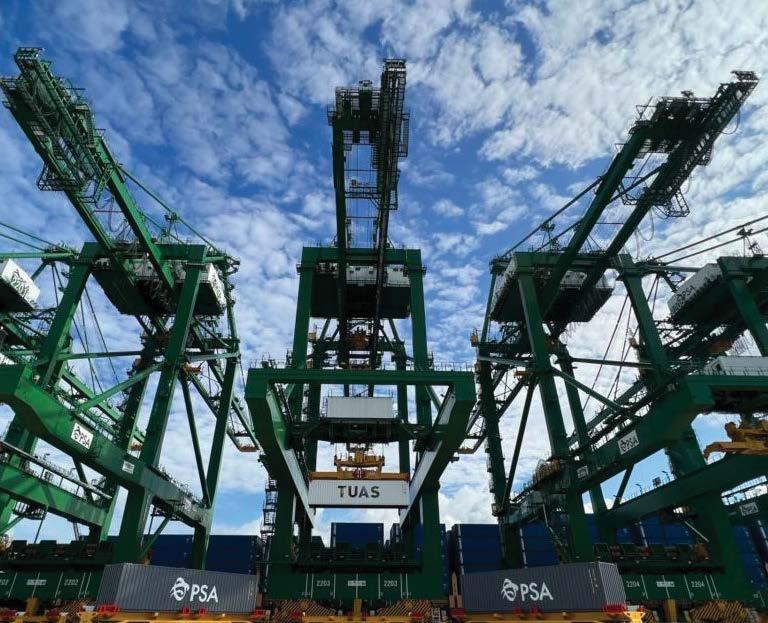
Southeast Asia, at the crucial crossing point of many major shipping routes. Therefore, the PSA Singapore has become an important hub for global supply chains as feeder vessels bring containers to the Port of Singapore which are then loaded onto larger vessels which are then taken on shipments to their final destinations.
This transhipment method is both costeffective and efficient because it allows vessels to make a single voyage to the port, rather than multiple journeys to each individual destination. Consequently, approximately 85% of the containers that arrive in Singapore are transhipped to another port of call, and so the role that PSA Singapore plays in facilitating and maintaining this system of transhipment can be felt across the local and international cargo industry.
Across PSA Singapore there are 55 berths at the Tanjong Pagar, Keppel, Brani and Pasir Panjang ports. These ports all are equipped with container handling equipment and have a combined capacity of 50 million TEUs. The largest facility is at the Pasir Panjang Terminals (PPT) which has 3 dedicated births and is supported by an open car yard and multi-storey car storage yard which accommodates 20,000 car park lots. In addition, PSA Singapore has its Jurong Island Terminal which is located on the western corner of Jurong Island and has 2 berth terminals with a capacity of 400 TEUs.
A significant part of the development of PSA Singapore is the Tuas Port which is currently under development to consolidate all the company’s container terminals into a single location on the western seaboard of Tuas. The finished port is planned to have an automated and integrated operations system which will be deployed to tackle the next generation of cargo demand. Construction of the first set of berths began in 2021 and is expected to be completed by 2040. The entire project is part of PSA Singapore’s vision to form a holistic ecosystem which will bring goods anywhere in the world faster and more reliably.
For PSA Singapore sustainability is not just an option but a responsibility. It is working constantly to ensure that in order for the business to retain its resilience and continue to grow without compromising the environment it has set out on a mission to reduce greenhouse gas (GHG) emissions for the next generation. It has committed to a range of targets which are in line with Singapore’s climate ambitions. A crucial step towards these initiatives came in a recent partnership between PSA Singapore and the Pacific International Lines (PIL). As announced this month, the two companies have signed a Memorandum of Understanding (MOU) to jointly develop sustainable solutions to cut carbon emissions and optimise maritime efficiency. This includes the development of a set of low-carbon emission routes for containers shipped by both companies.
PIL is the largest home-grown carrier in southeast Asia with strong shipping links in Asia, Africa, the Middle East, Latin America, and Oceania. As leaders in their respective industries, the partnership signifies a crucial move towards sustainability throughout the shipping industry. Mr Nelson Quek, Regional CEO of Southeast Asia for PSA International discusses the partnership between its flagship
Singapore division and PIL in the company’s recent press release, stating that “PSA is pleased to partner with PIL as we take the bold and essential step towards decarbonising the global supply chains that power our economy. We remain committed to working hand-in-hand with likeminded stakeholders as we spur concerted action towards our transition to a cleaner and sustainable future beyond the areas served by our ports”.
Therefore, this crucial partnership is set to drive change across the industry and allow each company to meet the common goal of achieving net zero carbon emissions by 2050. It is these joint ventures with other respected stakeholders within the shipping and cargo industry, that have allowed PSA Singapore to develop its operations and establish itself as a crucial hub for these industries on a global scale. Through strategic partnerships, PSA Singapore continues to deliver productivity and efficient terminal services.
Overall, PSA Singapore has worked tirelessly over the last 50 years to move from a regulatory board into the world-leading ports and terminal group,

which has continued to expand across the globe. PSA Singapore plays a crucial role in an international network of port and container handling services both under PSA International, but also in the shipping industry as a whole. Consequently, through this work to develop its facilities and through strategic partnerships with significant stakeholders across the industry, PSA Singapore continues to foster a leading supply chain which is powered by its innovation, technology, and sustainable practices.
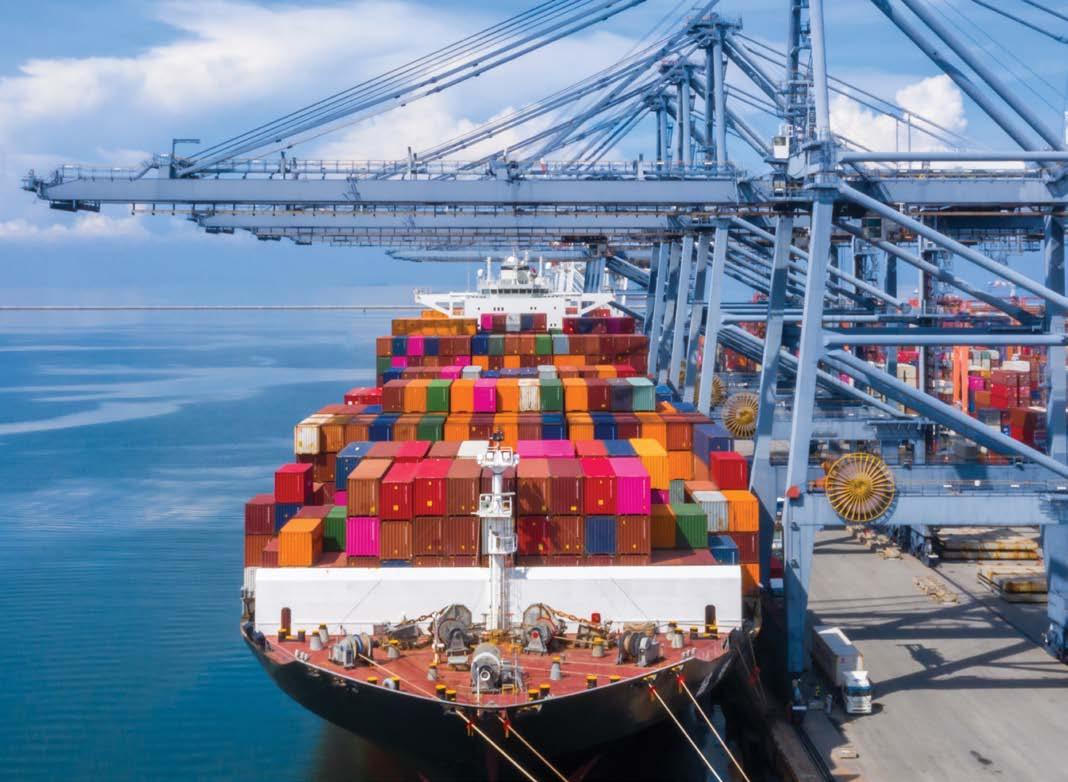


Gold Fields Australia
The Australian mining industry is one of the largest in the world, bringing significant profit to the nation. Gold Fields’ collection of mines certainly stands as a key contributor to the Australian mining industry. Operating across four mines in the Southwest region of Australia, a lot can be said for the rapid growth that the mining entity has experienced in the last 20 years, reaching an unprecedented position in Australian mining.
As suggested by the name, Gold Fields mines are located across the Eastern Goldfields region in Western Australia. The company is comprised of four mines: Agnew, St Ives, Granny Smith and Gruyere. The first two mines were acquired over 20 years ago, operating a tiny production, before growing into the mining entity it is today. Such success was further advanced with the attainment of Granny Smith and Lawlers gold mines from Barrick Gold towards the end of 2013. Furthermore, in 2016 Gold Fields created a vital joint venture with Gold Road, so that the Gruyere mine could be utilised more efficiently, in the form of an open pit. Such an acquisition was a solidifying moment of Gold Field’s success.
IPP(WA) have proudly been supplying Gold Fields Australia their PPE and Safety products for over 20 years now. Keeping people safe is what we do best.

The prosperity of Gold Fields is represented by the Yilgarn South Assets, which is a measurement of the company’s contributions to the Australian mining sector. Currently, the Yilgarn South Assets provide an additional 452,000 ounces of annual production to the country’s mining sector, with 2.6 million reserve ounces and 1.9 resource ounces. In reference to the former, this is the projected figure of materials that are expected to be recovered and produced at the four mines. Alternatively, resource ounces refer to the economic interest in mining operations. This is indicative of the external investment in Gold Fields operations, and how this translates financially. It is therefore no wonder that Gold Fields Mines is the largest regional Australian production centre, responsible for 40% of total production.
If we take a closer look at each individual mine, we can begin to see how each site has a specialism which contributes to the bigger picture of Gold Fields success. For example, St Ives is the oldest mine out of the four mines. Having been in operation since the mid-1980s, it has produced over 10.5 million ounces of gold. This makes it the leading gold producer out of all the mines, as it produces more than 350,000 ounces of gold each year. Such discoveries are made through the successful exploration of the extensive greenfields project pipeline, as the mine is characterised by both underground and surface mining. Over the years, St Ives has had many significant findings, such as
the discovery of an impressive high-grade deposit, which was viewed as such an impressive venture, that it earned the name of ‘Invincible deposit’.
Moving on to the Gruyere Mine, it is heralded as one of Australia’s largest underdeveloped gold deposits. Located about 200km east of Laverton in Western Australia, it has an accumulated mineral resource of 148 million tonnes, grading at 1.2 grams per tonne for 6.2 million ounces of contained gold. The Gruyere Mine is so successful that is projected to become Australia’s deepest open-cut gold mine. Currently, the mine consists of one main open pit which will be developed in stages to incorporate an approximate depth of 500 meters below the surface. The main mining activities that occur at Gruyere mine include loading, hauling, drilling, blasting and equipment maintenance, which is carried out by specialised contractors. Subsequently, the Gruyere Mine is projected to continue prosperous exploration until at least 2031.
Located to the northeast of Perth, is the third mine; Granny Smith Mine. This particular mine demonstrates the unwavering dedication of the Gold Fields team, as four days a week the team fly to the site via a chartered jet from Perth Airport, taking nearly an hour and a half to travel to work.
Thankfully, Gold Fields recognises the strain that this may have on employees, consequently, some members of the team live in host community towns such as Laverton and Kalgoorlie. Granny Smith’s most active mine can be found at Wallaby, where the Granny Smith Carbon-in-pulp processing plant is located and metal ores are processed under campaign milling conditions.
Finally, the Gold Fields Australia mining network is made from the Agnew Gold Mine. Located in the Eastern Goldfields region, it produces more than a quarter of a million ounces of gold a year.
The Agnew mine was acquired by Gold Fields in 2001, which allowed the mine to source gold from underground and be processed by the



Gold Fields Australia
CIP plant. Similar to Granny Smith, the 650-man workforce flies in from the outpost location of Perth. The commitment of the Gold Fields team stems from underground production, development, and maintenance, to low-voltage electrical work.
Gold Fields has a clear devotion to diversity and inclusivity in the company. The company has a strong belief in a rich culture throughout the organisation. Consequently, diversity is not just a tick box, but a valued contribution to the company, as the experience, knowledge, and creativity of each individual is a key asset to the success of the business. This is demonstrated by the meritocracy system that the company operates on, as each employee is encouraged to reach their full potential.
This is refreshing to see when the company is placed in a mining landscape where indigenous Australians, as well as women, lack overall
representation. In response to this, they have created initiatives that help support these groups, which include bursaries, and trainee apprentice and graduate programs, which help mentor the next generation of talent in Gold Field mines. In particular, the conviction in a women-led workforce is coming to fruition: over 45% of the Perth office comprises of women, with 40% of women in leadership roles. The notion of gender equality is so deeply rooted in the value of the company, that they are working hard towards the representation of women in all roles, with the goal of 25% representation by 2025, and 30% by 2030. This is further indicated by the indigenous populous that makes up 3.6% of the entire workforce, with clear efforts to expand in the future.
Overall, Gold Fields Australia has created a tenacious reputation in the Australian mining industry. With a wide variety of services available, spanning across mining sites, they are going through a period of exponential expansion. Consequently, they are one of the most valued added mining companies in Australia, with no plans of stopping!



